

Best Free CDL Pre-Trip Inspection Checklist | Trucker Safety & Profit

Table of Contents
The indispensable CDL pre trip inspection checklist is one of the most important rituals of a driver's day. Industry veterans know this routine like the back of their hands—it's that vital to the trade— but new drivers struggle with how to remember their CDL pre trip inspections, especially for the exam.
Drivers are required to complete this walkthrough at least every 24 hours, after their mandatory 10-hour break. A detailed inspection can safeguard not only your safety but also that of everyone else on the road.
This article will walk you through an exhaustive checklist to follow before every trip, as well as the potential costs of not doing so. We've designed this list with YOU in mind, so we're throwing in some money-making tips that will help you avoid steep fines and costly repairs.
"Spotting and fixing vehicle defects early on keeps you safe and your truck in good shape."

Why Following the CDL Pre-Inspection Checklist is So Important
The price of a failed DOT inspection makes completing a thorough CDL pre trip inspection checklist even more pressing. Violations can cost carriers thousands each year in both penalties and out-of-service (OOS) trucks. According to the FMCSA, around 20% of vehicles are OOS due to failed inspections at any given time. For an owner-operator, this means you'd be paying thousands in vehicle payments on a truck that's not earning you any money.
The pre trip checklist is designed to avoid any possible accidents due to equipment failure and failed safety inspections. A few minutes of caution pays for itself ten-fold down the line.
DOT & Truck Inspection
- Steer Axle/ Rear Suspension
- Side of Cab
- Rear of Cab
Driver Shaft/Rear Frame
- Trailer Front/Side/Rear- Trailer Suspension
Gauges/Inner Truck
- DVIR form fill out
"Most pre-trip truck inspection lists cover safety. We go beyond that with time and money-saving tips in our pre-trip inspection checklist PDF." - Brian Smith, Director, Global Marketing of Cota Systems
- Get the Google Sheet
- Download the Printable PDF
General Tips Throughout Your Pre-Trip Inspection
Because you don't have access to a pre trip inspection checklist during the CDL exam, drivers have created a few tricks to pass this part of the test. The most common memorization tricks are:
BBC: Is any plastic or metal bent, broken, or cracked?
CDL: No hard materials should be cracked, damaged or loose.
ABC: Are there any abrasions, bulges, or cuts on the rubber?
PFL: Peak for leaks in fluid and air containers.
PMS: Are bolts properly mounted and secure?
ABCDF: Do you see abrasions, bulges, cuts, dry rot, or frays?
A bit of common sense will help you put these acronyms to good use. For example, there's no way BBC would apply to rubber, as rubber wouldn't be bent, cracked, or broken. Most drivers pick one for each material type and stick with it until they get more comfortable with the list.
What are the ABCS in a pre-trip inspection?
As mentioned above, the ABCs refer to Abrasions, Bulges, and Cuts to check for during the Class A CDL pre-trip inspection. This applies to rubber or soft surfaces - things like tires, hoses, and rubber bushings.
How Long Should a Proper CDL Checklist & Inspection Take?
Ideally, it takes 15-30 minutes to run through the CDL pre trip inspection checklist depending on experience level and whether or not any issues are found. If issues are found, they must be fixed right then, before taking any more loads.
The cost of preventative maintenance averages $15,000 per truck per year. This figure is a drop in the bucket compared to the cost of inoperable equipment. Breakdowns and crashes due to mechanical failure cost carriers billions industry-wide. Consider an owner-op paying $3,500 per month on insurance and loan payments. Those payments still have to be made regardless of whether the truck is in the shop or on the road. Adds up quickly right? Spending a bit of extra time and money on prevention keeps trucks on the road and earning money.

Get your Free CDL Pre-Trip Inspection checklist today!
Standard cdl pre trip inspection checklist.
Our pre-trip inspection Class A checklist serves two purposes: helping new drivers pass this portion of the CDL exam, and guiding CDL holders through the process with 100% accuracy every time.
A few exam tips before the pre-trip checklist:
- Point to or physically touch each area being inspected. This will help your memory and prove you know your stuff.
- Start with a big section and break it down into small sections from left to right like reading a book.
- During the test, make at least 2 checks for every item or area.
▢ Hoses: all hoses should be secured on both ends with no splits or cuts
▢ Fluids: engine oil, washer fluid, coolants, and power steering
▢ Belts: no more than 1/2"" to 3/4"" of give, securely mounted with no fraying ends
▢ Alternator: securely mounted, belt in good shape
▢ Water pump: properly mounted with no split or leaking hoses
▢ Air compressor: securely mounted, no visible or audible leaks
If Left Unchecked:
Oil leaks and coolant issues are two of the most common breakdown causes, both of which can be spotted during pre-trip. Scheduling dry maintenance every 10,000-25,000 miles and wet maintenance every 25,000-50,000 miles can prevent most engine issues. These regular services, ranging from $50-$450 , are nothing compared to the price of replacing or rebuilding an engine - $20,000 - $40,000 . Thorough pre-trip inspections are the best way to avoid engine breakdowns and escalated damage.

▢ Brake Pads: ¼ minimum brake pad thickness
▢ Slack Adjuster: 1” of play and at a 90' angle to the brake chamber
▢ Brake Chamber : no audible leaks or visible damage
▢ Brake Hose: securely mounted, no audible leaks, splits, or cuts
▢ Brake Drum: no bluing from excessive heat, securely mounted
Brake problems are the most common cause of semi-truck accidents . While over-breaking is a big player in this, a lack of maintenance and unnoticed airline damage usually play roles, too.
Brake pad replacement costs $150-$300 per axle ($750-$1,500 total) and $80-$160 per hour in labor. The consequences of brake failure are incalculable - body repairs, cargo damage, and strikes to your carrier safety rating will follow you. The last thing you want to deal with is higher insurance premiums or trouble getting placed on loads. Take this part of your pre-trip inspection extra seriously.

- Front: clearance lights, headlights, high beams, turn signals, flashers
- Sides: turn signals, flashers, clearance lights
- Rear: tail lights, brake lights, left turn, right turn, 4-way flashers
- Front: clearance lights
- Rear: clearance lights, tail lights, license plate lights, brake lights, turn signals, flashers
▢ Reflector Tape: clear, free of dirt
If Left Unchecked:
Fines for a headlight out vary from state to state, but the consequences of non-functioning brake lights or turn signals could confuse drivers and create unsafe situations. Both of these can be spotted and fixed during a pre-trip inspection. It's easy to run to the shop and change the light yourself if possible. License plate bulbs are just a few cents, and headlight kits range from $40-$250 . Don't add the price of a ticket on top from getting pulled over!
On the topic of lights, it's important to note that warning lights like the engine light or battery alert light should be addressed immediately to avoid developing into bigger issues down the road.

▢ Wheel inside: not broken, no illegal welds
▢ Wheel outside: no cracks or illegal welds
▢ Tires: no cuts or bulges, air gauge matches manufacturer recommendations, tread depth at least 4/32" and evenly worn
▢ Spacing: duals are properly spaced
▢ Valve Stem: not audibly leaking. metal cap in place and secure
▢ Lug Nuts: present, tight, no cracks
▢ Hub Seal: not cracked or loose
Tire problems cause 8,000 truck accidents per year. While flats are sometimes unpreventable, blowouts can be caused by improper inflation , which can also shorten the lifespan of your tires via irregular wear and tear. Timely alignments and rotations can also keep tires running longer; the price of new big rig tires is from $250 to $600 . A tire blowout mid-load can make you miss your appointment and waste precious driving hours - all the more reason to be thorough in your truck inspection.
Something to keep in mind is the way you conduct your pre-trip checklist is important. For example, there are a lot of videos and content showing truckers how to check their tires by kicking, beating, and even using a hammer. Hitting a tire with force like that, in the right spot (damaged) can lead to a blow-up and severely injure you and your truck. Even lugging around a damaged tire can lead to a blow-up . Stay safe and take all necessary precautions!

Steer Axle/Rear Suspension
▢ Steering Shaft: not BBC, securely mounted
▢ Steering Gear Box: not BBC, securely mounted, no visible leaks
▢ Hose: no visible leaks, properly mounted
▢ Pitman Arm: not BBC, securely mounted, nuts and pins are all hardware is present and secure
▢ Drag Link: rubber is in good shape, bushings are properly greased and not split or cut
▢ Upper/Lower Control Arms and Tie Rod: not BBC, securely mounted
▢ Spring Mounts: not BBC, securely mounted
▢ Leaf Springs: not BBC, securely mounted, not shifted or scissored
▢ U-bolts: not BBC, securely mounted, all accounted for
▢ Shock Absorber: not BBC, securely mounted, no visible leaks, rubber bushings aren't dry rotting
If Left Unchecked:
On their own, each of these parts isn't a huge deal to replace. For example,
- Steering Shafts: $100-$300
- Pitman Arms: $50-$200
- Steering Gear Box: $150-750
- Shock Absorber: $50 - $90
On the other end of the spectrum, neglect can lead to the truck leaning to one side, which can cause further damage. Blown shock absorbers will also make your truck hard to handle, steer, and control. Say it takes a mechanic 3-5 days to diagnose and fix a suspension issue. You could lose out on $1,000 - $3,000 in earnings that week, plus the several hundred it will cost in repairs. Spotting these issues during your 15-minute pre-trip inspection could save you thousands.

▢ Mirrors: mirrors adjusted properly and without cracks, free of dirt
▢ Foot Pedals: unobstructed
▢ Horns: functioning properly
▢ Windshield: no stickers, cracks, or excessive dirt
▢ Heater/defrost: both operate when the fan is set to max
▢ Wipers: arms move properly when turned on, and wiper fluid works
▢ Steps: mounted and secured
▢ DEF cap: secured
▢ Fuel cap: gasket and vent in place, chain secures cap to the tank
▢ Skirting: no damage, panels secure
To be mid-trip and discover your defrost or wipers don't work can be a scary feeling. A suddenly obstructed view with no way to clear it is what the in cab inspection is meant to avoid.
With the average truck eating up $15,000 per year in maintenance and repairs, it's the little things that add up to such a steep number. For example, fixing a windshield can cost anywhere from $500 - $2,000, depending on the truck type and severity of damage. Wiper blades cost $14 - $35 on average, and an AC compressor would cost around $200 to fix/replace . It's easy to see how these numbers add up fast, but waiting until something breaks on the road and taking on the cost of an OOS violation can quickly double and even triple those numbers.

▢ Frame: no illegal welds, not BBC, no rust
▢ Drive Shaft: not BBC, properly mounted, not twisted, and the U-joints are clean
▢ Universal joint: not BBC
▢ Differential: no leaks
Rusting frames and chassis can be prevented and stopped in their tracks with preventative protective sprays . To protect a drive shaft, keep it free of dirt and debris and make sure it's well lubricated. The price of a new driveshaft is around $1,200 . The cost of checking it during pre-trip is free. Remember, the purpose of a pre trip inspection Class A is to not only keep you safe but to spot mechanical issues before they get worse.

▢ Bolts/Bracket: all accounted for and secure, not broken or bent
▢ Locking pins: all accounted for and secure, not broken or bent
▢ Release Handle: releases freely and is in the locked position.
▢ Apron: no cracks, no gap between apron and 5th wheel plate, securely fastened
▢ Skid Plate: no cracks, properly greased, securely mounted
▢ Platform: securely mounted, not cracked or broken, no illegal welds
▢ Kingpin/Locking Jaws: locking jaws are wrapped around kingpin, which is straight with no chips or welds
▢ Air Lines: securely mounted at both ends. Lines are free of cuts, no audible leaks.
▢ Electrical line: secured at both ends. Lines are free of cuts, no audible leaks.
The consequence of worn brackets or pins is accidental uncoupling, otherwise known as dropping a trailer. Not only can this cause accidents, but it can damage the trailer and the cargo inside. In these cases, the carrier is almost always liable for any damages.

▢ Header Board: properly mounted and secured, not BBC, no missing rivets
▢ Clearance lights: not loose, cracked, or dirty
▢ Top rail: No cracks or collision damage.
▢ Rivets, holes: no holes, all rivets in place.
▢ Landing gear: properly mounted and secured, not BBC, shoes are present, handle moves freely
▢ DOT tape: covers at least 50%, not dirty or peeling
▢ Floor: no holes
▢ Cross members: none are damaged, missing, or twisting
▢ Tandem release: properly mounted and secured, not BBC
▢ Slide rail: properly mounted and secured, not BBC
▢ Pins: engaged
▢ Clearance lights: not cracked or dirty
▢ Doors: not broken, no holes, seal intact
▢ Hinges: securely mounted, not BBC
▢ Door handles and rods: securely mounted, functioning properly
▢ Lights: securely mounted, not cracked or dirty
▢ DOT tape: clean, covers 100% of the backside of the trailer
▢ Bumper: properly secured, not BBC
The trailer keeps your precious cargo safe. Issues with the cross members, flooring, or doors leave cargo unsecured and exposed to the elements. Of this list, the most expensive fix is replacing or repairing cross members. Just one broken cross member puts a truck OOS, and repair/replacement costs thousands , mostly in labor. How can they get damaged?
- sloppy hooking/unhooking
- exposure to the elements
- uneven loading
- punctures from inside the trailer
- blown tires
If you notice trailer damage during your Class A pre-trip inspection, you'll have to get it fixed before taking any more loads.

▢ Air pressure: set to proper operating range, no warning lights
▢ Temperature gauge: rising to proper operating range, no warnings
▢ Oil pressure: rising to proper operating range (25-50 PSI), no warnings
▢ Voltmeter: operational, 13 - 14 volts
▢ Dashboard light indicators: check the indicators for the high beams, turn signals, and flashers.
▢ Fuel: gauge matches visual compared to looking in the tank
▢ Tachometer: 1000-1500
▢ Water temperature: 180-205 degrees
▢ Def level: minimum of one light bar
If these gauges don't pass the pre trip inspection Class A checklist, it's likely due to faulty wiring or a fuse issue. You'll have to identify the source or take it to someone who can.
Simple electrical fixes can be done on your own. At a mechanic, a blown fuse costs around $100 to repair, and a full rewiring can cost anywhere from $1,000 - $2,000 .
Preventative maintenance includes replacing old connections with more modern technology and having circuit protectors checked during regular maintenance.

A DVIR, or Driver's Daily Vehicle Inspection Report, is the form that drivers fill out during the Class A pre-trip inspection and at the end of their day. It's designed to keep the company informed of any missing or damaged parts of the truck, keep maintenance costs as low as possible, and keep trucks on the road safely.
Drivers should keep their completed forms accessible and stored for up to 6 months, just in case they're asked to pull them for reference.

Most Common Issues Found During Pre Trip Inspection
Below are the most common issues found while running through a CDL pre trip inspection checklist. If left unchecked, these things can lead to getting pulled over and receiving a violation, or worse, causing a breakdown where you or others are hurt.
Here's a run-through of what to do if you run into these common issues and how to avoid them."
Broken Lights
What to Do:
The first of the three L's (lights, leaks, and leans), broken lights are an easy way to get pulled over and trigger a full-blown roadside inspection. If you notice an issue with one of the many lights during your truck inspection, you're required (and it's in your best interest) to get a replacement immediately.
How to Avoid This:
Obviously, there's no way to avoid lights going out. However, you can avoid faulty reflectors by getting regular washes, especially if you've driven somewhere rural or salted. Shippers appreciate a clean truck, too.
Maintenance as a Money Saver:
Lighting violations are known as ""gateway violations"" because they open the door to law enforcement noticing other things wrong with the truck. This makes staying on top of maintenance even more pressing. For example, most new reflectors cost around $5 each . If you get pulled over for missing or faulty reflectors, it could trigger an inspection that makes you A) sit still and waste hours, B) miss your appointments, C) end up OOS, and D) get in trouble with your company.
Leaning is the second of the three L's. A leaning truck could indicate
- tire problems
- faulty suspension
- worn spring bushings
- airbag issues
The first step is to check out the above mechanisms yourself for any noticeable worn springs or airbag problems. To avoid damaging any equipment even further, go to the shop after your pre-trip inspection and get it checked out.
Uneven loading puts excess strain on the truck and can cause leaning over time. You have every right to ask shippers to fix uneven or shoddy loading.
A new leaf spring is one common solution to fixing a leaning truck. Costing anywhere from $80 - $450 , it's a solid first step compared to full suspension repair which costs $1,000 - $2,000.
The last of the three L's are leaks. When you look on the ground near the engine, do you see any puddles or fluids? There are three common sources:
- power steering
- water leaks
- brake fluid
Identify the source. What type of liquid is it? Does it smell? How big is the puddle? Is the radiator cap secured and not broken? If you can identify the problem and fix it - great. If not, make a call to the nearest shop.
The reason you check every bolt and hose on the pre trip inspection Class A checklist is to avoid these mystery leaks. Preventative maintenance is key.
Maintenance as a Money Saver:
It's a lot cheaper to replace nuts and bolts than it is to replace an entire system that's been damaged due to ongoing leaking. Driving with a leaking radiator can damage engine bay components and require repairs to a chain of other parts. If the problem was the radiator gasket, for example, the cost of a replacement would only be around $40 .
The limit for tread depth is 4/32" on steer tires and 2/32" on others to pass a Class A pre trip inspection. Sometimes tires look good during inspection, but after a long haul, treads have worn down too low.
Tire replacement should be prompt - blowouts happen all the time and can do serious damage to the underside of the trailer. Check if the tire is still under warranty, and have it and any others replaced ASAP.
Make sure tires are always filled to the manufacturer's recommendation and ideally the same PSI in each tire. Note that tread loss accelerates in extreme heat. Tires gain about 1 pound of pressure every 10 degrees as the temperature increases. Asphalt can be 20-50 degrees hotter than the air; keep that in mind before thinking any bulges or worn tread will be fine.
New big rig tires cost $250 - $600 , or $0.04 per mile. Because of the high cost, many large fleets are opting for imported tires to keep costs down. Research reviews on the brand you have in mind first - many have bad reviews from truckers. Here's a video that shows how much time can be lost by blowing a steer tire.
Overheating
Pull over safely and legally. Give the truck some time to cool down in idle. Try turning the heat on to get some of that heat out of the engine - it will feel uncomfortable but protecting the engine is worth it. Check to see if the radiator is jammed with debris or has bent fins. An overheating truck could be difficult to diagnose, and you'll most likely have to have a mobile mechanic come to you. If you were going up a steep grade, it might have just been the way you were driving.
- Keep the radiator clean
- Check the muffler for soot build-up in older trucks
- Don't use cruise control in hilly areas
- Don't overload the trailer
Constant overheating can be hard to diagnose, and it can make you chronically late to appointments. Regular maintenance and a thorough CDL pre trip inspection Class A are where the little details can be spotted and nipped in the bud.

Cota Systems Make More Money Per Mile CDL Pre-Trip Checklist
We know the struggle of hauling empty or partially full trucks and deadheading between every load. Our solution? Seamlessly connecting truckers with available LTL loads that complement their route and trailer capacity. Free and easy to use, Cota Systems™ platform makes it simple to earn more money per mile. We'll send you available LTL truck loads on your preferred routes as soon as they're posted.
Simply sync all of your favorite load boards into Cota Systems™ for easy browsing and instant notifications.
COTA SYSTEMS™ Mobile App
Cota Systems™ mobile app connects drivers with new loads and their dispatchers no matter where they are.
- Extra loads on the road.
- Scan and send documents.
- Keep track of your earnings.
- Seamless dispatch integration.
- Real-time load notifications.
- Stay connected anywhere.
Whether you're trying to figure out how to find box truck loads , or you just aim to connect in real-time, anytime, staying efficient on the road makes the difference between staying profitable and staying afloat.
Our trucking dispatch software is completely free and feature-rich, saving teams time on paperwork and document sharing. The platform integrates seamlessly with the driver app simplifying everything from load finding to billing.
How Cota Systems™ helps drivers 10X their income:
- Eliminates wasted miles with convenient LTL and partial load boards
- Efficient document uploading and one-click billing
- Communicate with shippers in the same app
- Load board syncing cuts down the time it takes to book a load
Bypass Construction
The DOT 511 traffic app provides state-specific traffic and construction updates. Check for delays on your route to get ahead of detours and lane closures. Each state has their own app, so download it ahead of time.
Why does it matter? If you earn $0.60 per mile on a 400-mile trip, that's $240 earned in roughly 8 hours. Now, say traffic adds 1.5 hours to your trip. You still earn the same $240 AND you don't have the opportunity to pick up another load before you reset. Time is money!"
In 2016, truckers were delayed a total of 1.2 billion hours because of congestion on the road - that's in the billions! Truck bottlenecks are mostly common in major cities. Planning your route ahead of time to avoid traffic delays is crucial to your bottom line.

Weather Apps
Winter and summer storms can eat into income and create seriously dangerous roads. Depending on the weather, you might be able to plan a different route to avoid delays or change the time and place you stop to rest. The AccuWeather app is a popular choice among drivers.
The horror stories of drivers getting stuck at a rest stop for days or getting blown over by strong winds paint the ugly picture of the weather as a driver's biggest opponent.
Truck Parking
After finishing your Class A CDL pre trip inspection, take a few minutes to map out overnight parking spots along your route. American Truck Parking does a good job of showing truck stops and rest areas that offer overnight parking, as well as the pricing, pictures, and other amenities. You can filter out for gated parking spots, CAT scales, showers, truck washes, and much more. Compare pricing beforehand and save yourself the cash!
Speaking of cash, it's important to take advantage of freight factoring. This method can offer truckers immediate cash flow, while waiting on customers to pay.
In addition to managing your cash flow, be sure to consider freight insurance , this protects your trucks and cargo from any potential risk during transit.
Dock Details
Headed to a new shed? Check them out on Dock 411 to confirm things like pallet restrictions and hours of operation. Not sure if you can fit? Most places have pictures that other drivers took or reviews about slow loading and yard hazards.
The benefit? This helps plan things like getting lunch, calculating hours, and knowing whether or not you even want to take a certain load. If you see reviews that a shed has an average 7-hour loading time (the standard is 2.5 hours ), you can have a conversation with dispatch early on to make a game plan regarding detention and/or layovers.
While researching docks, don't put your well-being on the back-burner. Be sure to invest in the right truck mattress for a good night's sleep during layovers or breaks.

Gas Buddy helps truckers find the cheapest gas prices along their route. While you're looking, you can see what stops have showers, food, repairmen, and other amenities so you can save time at a 1-stop shop.
For reference, the average owner-operator spends $45,605 on fuel per year ( 2022 ). Company drivers don't usually have this problem since they have discounted fuel cards. (You can get fuel cards with Cota Systems , too). To learn more, check out our post on the best fuel cards for truckers.
Legally Bypass Inspection Sites
Did we mention that time is money? Another way to save time is with Drivewyze , an in-cab app for driver devices that provides inspection bypass opportunities at 884 weigh stations across the states. When bypass isn't allowed, they have an e-inspection system that speeds up the process and avoids long lines. It sounds too good to be true, but it's 100% legal and works 89% of the time. Prepass is another company that offers this service.
Weigh station stops can take anywhere from 30 minutes to a few hours if lines are long or they find something wrong with your truck. That 30-minute stop could have earned you $15 (at $0.60/mile for 25 miles). Doing so every day could cost you $300/month, and that's IF the stops only take 30 minutes!
Most drivers use a combination of navigation apps. Hammer and Google Maps are popular choices. Systems made specifically for truckers won't take you down prohibited roads - that's why Google Maps alone might not cut it.
Health Apps
Recent studies found that workers who take care of their mental health average 9.3 fewer sick days per year than workers who don't. The life expectancy of truck drivers is 61 years , partly due to their unhealthy lifestyle and work-related stress. Your health is just as important as any CDL pre-trip list. Obesity is one of the most prevalent health issues in the trucking industry for long-haul drivers. These healthy habits can save you down the line:
- Skip the fast food, sugary snacks, and sodas.
- Find a way to manage your stress. Talking to a friend while you drive or finding a podcast that you enjoy are two common solutions.
- Exercise during home days focusing on your back.
- Switch up your stimulants. Instead of Redbull every day, try green tea, coffee, or Yerba Mate a few days per week.
Try out some apps like MyFitnessPal for weight loss and nutrient tracking or Luminosity for mental health support.

OTR drivers can take advantage of toll services like Prepass (which also serves as a weigh station bypass) and Best Pass , a prepaid transponder system. If a toll company isn't covered, it's best to just use cash and keep your receipt. A few tips:
- Take a second to review toll prices on your trip. Any tolls should be factored in when dispatch discusses rates, especially in cities.
- Find and join any toll discount program you can find (take the New York toll reimbursement program, for example)
- Best Pass offers cash toll discounts, but you should verify that the transponder rate wouldn't have been the same (and much faster).
How to Remember Pre Trip Inspection CDL Checklist
Start with our printable CDL pre trip inspection cheat sheet and repeat, repeat, repeat. Use the same checklist every time so your brain can get into that rhythm. Remember the acronyms:
BBC: Bent, broken, or cracked
ABC: Abrasions, bruises, cuts
PFL: Peak for leaks
3 L's: Lights, leaks, leans
Understanding the mechanics of the truck and how everything works together will help your brain form stronger connections and remember more. Try explaining the process to your wife, kids, or friends (even if they won't remember) so you can spot areas you need to study the CDL pre trip inspection PDF more.
What is the item most commonly overlooked during a pre trip inspection?
A few items on the CDL pre trip inspection checklist trip up new drivers most often:
- Chocks: During your CDL class a pre trip inspection, you'll have the vehicle on and off, and be testing various brake systems. Chocks prevent the truck from moving around while you're underneath and walking around.
- Seatbelts: It's often the last thing on a new driver's mind on the long list of items to inspect. But, your life depends on it.
- Emergency Kit: Especially if you drive a shared truck, you don't know if the previous driver used up anything in the kit. Just because you see the kit doesn't mean everything is present and functional.
- Reflectors: Reflectors help other vehicles see you at night. Because there are so many, drivers rush through this check or give them a quick glance. These are another "gateway violation" that can get you pulled over and given a roadside inspection.
- Wheel Lug Nuts: Loose wheel fasteners could have your tires speeding down the freeway toward other cars and trucks. Double-check that all lug nuts are fastened and free of rust.
- Personal Health: Remember the figures we mentioned about truck driver life expectancy. Put your health first, and don't drive if you feel sick and feverish.
This is all about the safety of you and others. Keep your pre trip inspection Class A cheat sheet with you and go through the same, thorough motions every time.
CDL Class B Pre Trip Inspection
The CDL Class B pre trip inspection follows virtually the same guidelines as Class A, but they differ in terms of vehicle type.
Class B includes buses, straight trucks, and smaller commercial vehicles that are typically not designed to tow additional trailers. Items like the 5th wheel and coupling mechanisms are obviously left off. Drivers have to check passenger doors, wheelchair lifts, handrails, emergency exits, and seating for passenger safety.
New Truck Pre-Inspection Checklist Addition
Non owner-operators who are regularly assigned new trucks can't take for granted that everything was left as you might have left it. Add these to your pre-inspection checklist:
- Cab card & book: permits, registration, IFTA paperwork, and cab cards are present and up-to-date
- IFTA Sticker: current year is displayed on both sides of the truck
- Elog Device: present and functional
- Permits: in the cab card book and up to date
- License Plate: front and back plates match
- Medical Card: med card and CDL are on your person or in the truck
- Paper Logbook: backup if E-log stops working
- Inspection sticker: stuck to the side of the truck and up-to-date
- FMCSA Safety Book: within arms reach of the driver's seat
Additional Supplies: load securing equipment, extra coolant and oil, cable cutters, hammer and wrench, hard hat, and steel-toed boots, and any wisdom you've gained from recent semi truck shows for the latest in safety and efficiency enhancements.
Final Notes on Completing Your CDL Pre-Trip Inspection Checklist
So, you're armed with the ultimate CDL pre trip inspection checklist that will help you pass your exam and save on vehicle maintenance. Your truck is your money maker; our goal for this guide is to give drivers the tools to protect their biggest asset and keep the most money in their pockets as they can. That includes showing you the best truck driver accessories and the best trucking GPS , so you'll be set for the long-haul.
Learn more about how to earn more money and truck driver pay in our blog . Here's another link to the pre trip inspection Class A PDF . Good luck!
Join Our Newsletter
Discover tips, trick, and tools to grow your business faster than ever! Plus - exclusive giveaways, discounts, and new feature releases.
The Cota Systems Blog
Discover new tools, tips, and tricks to drive the growth of your business.
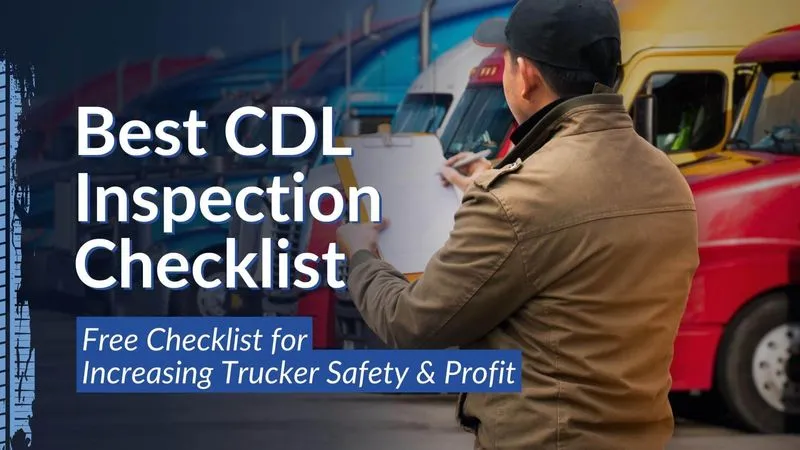
What is Consolidated Freight? Shipping Secrets

#1 Ultimate Freight Broker Guide: Results You’ll Love
Pre-Trip Inspection Forms – Examples and Templates
- What are pre-trip inspections?
Pre-trip inspections are required for companies that operate and manage a fleet of vehicles used for commercial purposes. The basic goal of a pre-trip inspection is to identify and document any potential problems with a vehicle before a driver is on the road.
According to regulations set by DOT, vehicle operators must perform daily post-trip inspections after a vehicle is operated. If any defects or problems are found in the post-trip inspection, it must be included in the post-trip inspection report. The vehicle is allowed to be sent out for use again once all problems have been addressed.
- What information is checked in a DOT pre-trip inspection?
The Commercial Driver’s License (CDL) pre-trip inspection is designed to certify that the problems have been addressed and that the vehicle is ready to be safely operated on the road. While there are many different types of vehicles on the road today, the DOT provides a basic list or items to check when performing vehicle inspections:
- Service brakes, including trailer brake connections
- Parking (hand) brake
- Steering mechanism
- Lighting devices and reflectors
- Windshield wipers
- Rear-vision mirrors
- Coupling devices
- Wheels and rims
- Emergency equipment
(Source: FMCFA)
- Pre-Trip Inspection Checklist Forms and Apps
Inspection checklists are designed to improve the inspection process by providing staff with an easy-to-use template on the best practices to follow for that inspection.
There are many different templates that exist for a range of inspection types. For example, a class A pre-trip inspection template would look slightly different than what is required for a class B inspection template.
The most basic checklist can be completed on a sheet of paper, but more companies are turning to mobile apps and forms to streamline their processes for performing pre-trip inspections. Digitizing this information is highly beneficial for fleet management and transportation companies that need to document and report on their vehicle inspections.
Paper forms are simple to use, but missing or lost paper work can become a problem later on. To minimize risk and to modernize business operations, transportation companies rely on simple apps to digitize the information rather than using paper forms.
Beyond the basic benefits of digitizing the information, mobile apps also provide a number of advanced features that are helpful when performing inspections . For example, driver dispatch is an easy way to organize drivers and delivery schedules based on the most efficient configurations possible. Other features such as barcode scanning, signature capture, and GPS capture can help you keep track of your deliveries and maintain records for your business.
Mobile apps can be built using no-code or low-code solutions that do not require advanced technical knowledge. Using a simple interface, anyone can start building apps for their pre-trip inspection checklists to replace paper forms.
- Common Pre-Trip Inspection Examples and Templates
For businesses that want to modernize their processes using mobile apps, an important feature is going to be the ability to customize the mobile app to meet specific needs and requirements. Most mobile apps will provide templates to use as a starting point and then customizations can be made to require certain information.
With the GoCanvas app builder, businesses can create pre-trip inspection forms and checklists that are then deployed to workers to complete via the mobile app. All of this is suited for workers in different locations and standardized processes around how businesses collect and store their inspection reports.
Key outcomes include an increase in worker productivity, efficiency, and improved data collection for operations teams. Here are some of the common commercial vehicle inspection templates and examples:
Class A Vehicles
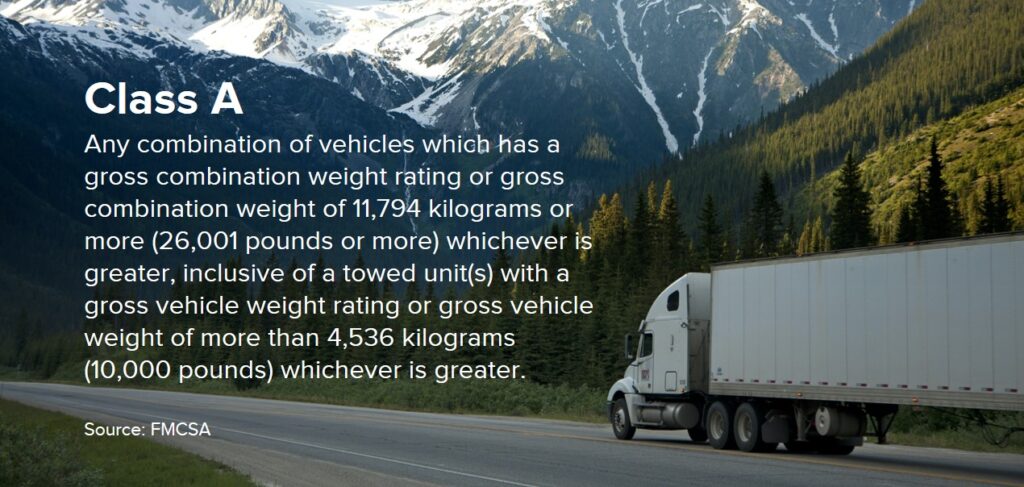
Class A vehicles are defined as “any combination of vehicles which has a gross combination weight rating or gross combination weight of 11,794 kilograms or more (26,001 pounds or more) whichever is greater, inclusive of a towed unit(s) with a gross vehicle weight rating or gross vehicle weight of more than 4,536 kilograms (10,000 pounds) whichever is greater.”
This would include tractor-trailers, combinations of truck and trailer, livestock carriers, tank vehicles, or flatbeds.
GoCanvas example and template:
- Pre/Post Trip Tractor Trailer Inspection
Class B Vehicles
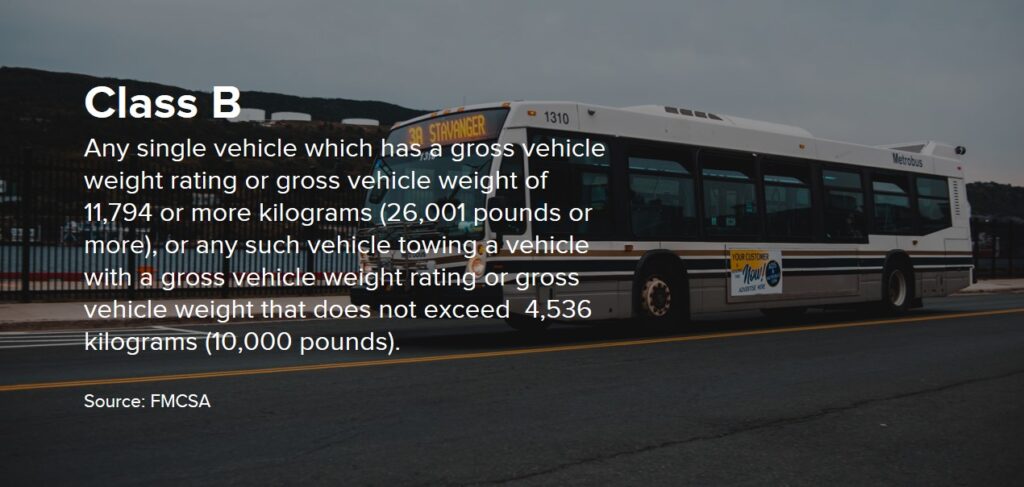
Class B vehicles are defined as “any single vehicle which has a gross vehicle weight rating or gross vehicle weight of 11,794 or more kilograms (26,001 pounds or more), or any such vehicle towing a vehicle with a gross vehicle weight rating or gross vehicle weight that does not exceed 4,536 kilograms (10,000 pounds).”
This would include straight trucks, large passenger buses, segmented buses, box trucks, dump trucks with small trailers, and tractor-trailers.
GoCanvas examples and template:
- Bus Driver Daily Inspection App
- Truck Driver’s Pre-Trip Inspection
Class C Vehicles
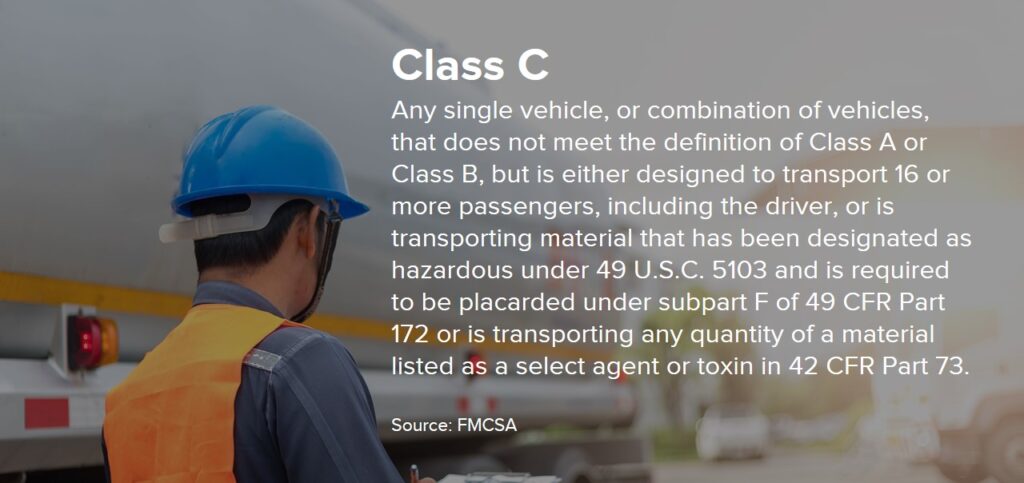
Class C Vehicles are defined as “Any single vehicle, or combination of vehicles, that does not meet the definition of Class A or Class B, but is either designed to transport 16 or more passengers, including the driver, or is transporting material that has been designated as hazardous under 49 U.S.C. 5103 and is required to be placarded under subpart F of 49 CFR Part 172 or is transporting any quantity of a material listed as a select agent or toxin in 42 CFR Part 73.”
This would include small HazMat vehicles, passenger vans, combination vehicles not covered by Classes A or B.
GoCanvas example and template:
- Pre-Trip Fleet Vehicles Inspection Form
- Driving Tests
- Transform how your business operates with mobile apps
Many companies in the transportation industry start using mobile apps to solve a single paperwork challenge, like pre-trip inspections. But there are many areas of business operations that deal with paperwork that can create slow and manual processes for staff. This includes things like delivery confirmations, mileage tracking, safety inspections, bill of lading, and any other paper-based processes for drivers and management. If you are looking for additional transportation apps for business, be sure to search in the GoCanvas app store where you can get started for free.

Stay in Touch!
About gocanvas.
GoCanvas® is on a mission to simplify inspections and maximize compliance. Our intuitive platform takes care of the administrative tasks, freeing our customers to focus on what truly matters – safeguarding their people, protecting their equipment, and delivering exceptional quality to their customers.
Since 2008, thousands of companies have chosen GoCanvas as their go-to partner for seamless field operations.
Check out even more resources

Centurian Transport saves $100k every year with GoCanvas
Centurion is the largest heavy haulage provider in Australia. They deliver national supply chain solutions to the resources, energy, construction & retail sectors…

Duotank Transforms Business Processes with GoCanvas
Duotank is a bag-in-tank alternative to the traditional keg beer system. The aseptic tank environment enables breweries to maintain the quality of their beer…

TWO MEN AND A TRUCK® used GoCanvas to increase data visibility & compliance
With a workforce that primarily works out in the field, many of the TWO MEN AND A TRUCK® locations found that paperwork was hindering…
Connect with an Expert Today.
We’ll help you put together the right solution for your needs..

- New Drivers - 1st License
- Defensive Driving
- CDL Practice Tests
- Air Brakes Courses—CDL & RV
- Log Books - US & Canada
- CDL Pre-Trip
- Learner's Permit
- Motorcycles
- Newly Licensed Driver
- Driving Test SHORTS
- Smarter Car Care
- SHORT Driving Tips
- Winter Driving
- Crash Analysis
- Air Brake Valves
- United States
- CDL Beginner
- CDL Turning
- CDL Pre Trip Inspection
- CDL Coupling
- Driving Instructors
- Pass CDL Air Brakes - Free
- Can't Log In
- Live Q & A
- Expert Witness
- The Founder
- 100K Campaign
- Smart Driver Success Stories
- Funny Driving Memes
Cannot find your purchased courses? Click here to Login!
- Commercial Drivers
- Pre Trip Inspection
Pre-trip inspections must be completed more often than every 24 hours.
How to Fill Out the CDL Pre-trip Inspection Form
https://youtu.be/SZ5K0G_dPnY
Introduction
All your training...all the manuals will tell you that you have to do a pre-trip inspection every day.
On a daily basis, you have to do a pre trip inspection.
That information is not entirely correct, and if you go on that information and you just do a pre-trip once a day , you're probably going to get a fine if you get pulled into the scale house.
So, we're going to tell you when you need to do a pre-trip and give you the specific information, so you don't get a fine you don't end up working the day for free.

When To To A Pre-Trip Inspection
Doing a pre-trip daily—doing a pre-trip inspection daily—is not accurate.
In terms of when you have to do a pre-trip inspection:
1) Minimum every 24 hours.
2) As well, anytime that you pick up new equipment you have to do a pre-trip inspection on that vehicle or that trailer.
3) The other time that you'll have to do a pre trip inspection as well, is if you're working with another driver keeping a unit going twenty four hours a day and you're working 12 and 12, or three drivers working 8-8 and 8.
You have to do a pre trip inspection on the piece of equipment that you're driving.
It is more relevant to semi trailer drivers because often you're picking up one, two, three, or four trailers in a day.
Every time you change trailers, you have to do a pre-trip inspection on that trailer.
Every time you pick up a new trailer , you have to do a pre-trip inspection.
Bus drivers the same, you get in a different unit you have to do a pre-trip inspection.
The other driver comes in, you're gonna do a pre-trip inspection because that driver was ten miles down the road and picked a nail up in one of the tires - the tire's flat.
Well...that driver is more interested in getting home than they are in doing a post trip inspection on that vehicle.
So you're going to have to do a quick walk around before you take off.
So the three times that you do a pre-trip inspection:
1) minimum 24 hours;
2) every time you get new equipment;
3) and when you're working the same piece of equipment with another driver.
Don't put your driver's license on a pre-trip inspection form or log book. If the thieves get hold of your license number it's very easy to steal your identity.
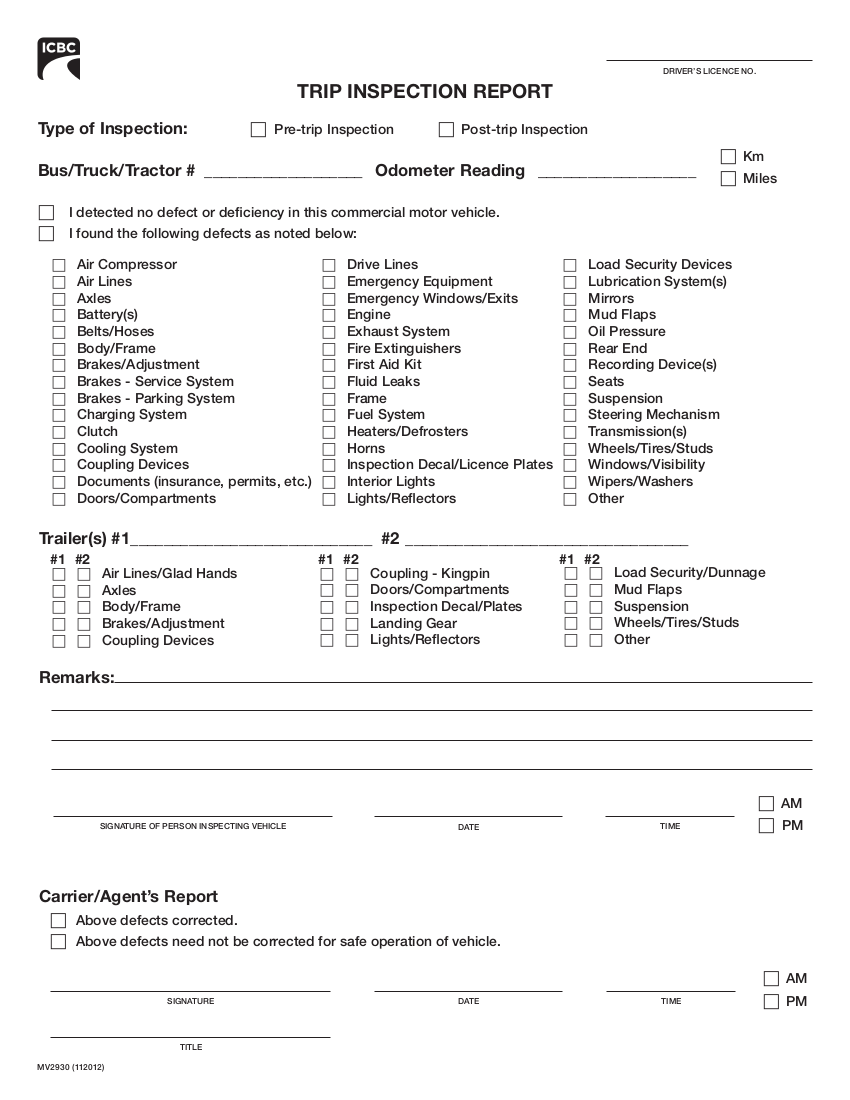
Pre-trip Inspection Forms
You have to fill out a pre-trip inspection form every time that you do a pre-trip inspection.
I'm gonna show you two pre-trip inspections today because one of the pre trip inspection forms is older and has a place on it for the driver's license.
And you can see that here.
Up here on the ICBC pre-trip inspection form that we use in British Columbia— ICBC as the Insurance Corporation of British Columbia.
Somehow an insurance company in British Columbia became responsible for driver licensing.
I don't know whether there is a conflict of interests there or not - maybe...maybe not?
The point is is that we no longer put driver license numbers on any of our legal documents - the log books or the pre-trip inspection forms because of freedom of information legislation and identity theft.
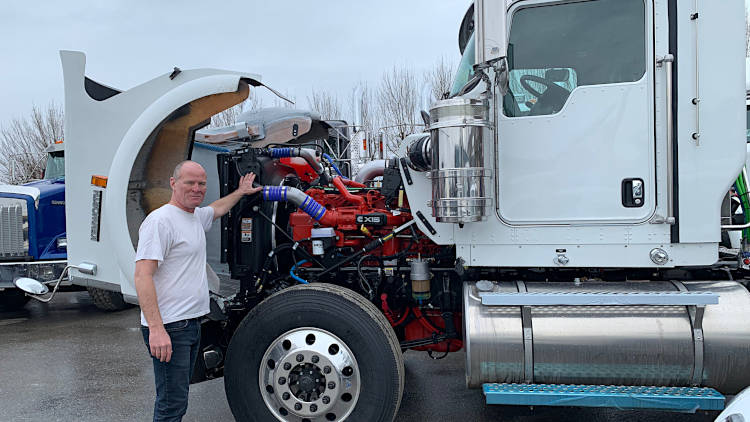
So don't put your driver's license number on; however, the unit number for the truck, the date, the time you started the pre-trip.
The reason that you put the time for the time that you start the pre trip is theoretically if you drive out of the yard and the DOT officer pulls you over right away and you put the end time on, well, they say:
"When did you do your pre-trip, if you're driving?"
So put the time that you started the pre-trip inspection on the form.
As well, am-pm.
There's two boxes - one box is:
1) "I detected no defects for the safe operation of this vehicle."
Check that box if you didn't find anything wrong.
If you did find something wrong:
2) "I found the following defects with this vehicle," check that box.
And then check the appropriate box in the list that you can see here behind me.
So, for example, if the fire extinguisher wasn't charged, you would check safety equipment and then write in the notes that the fire extinguisher isn't charged.
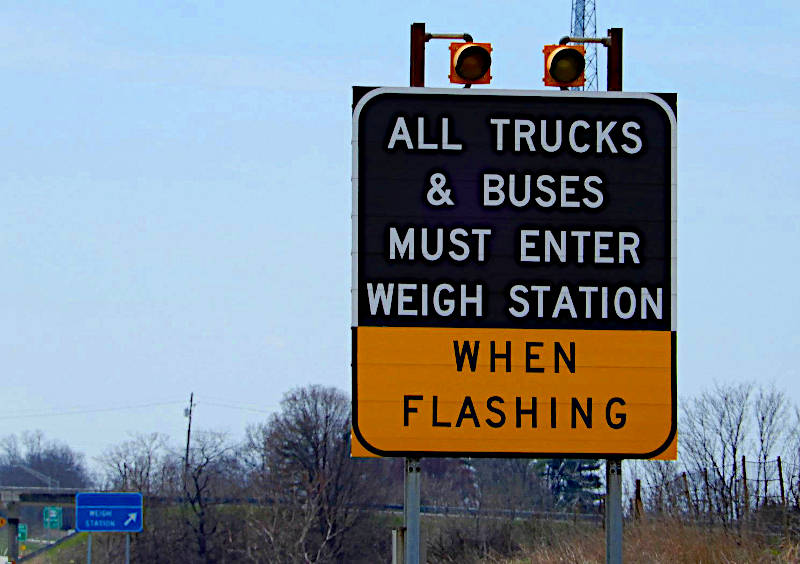
Now, you have to have a fire extinguisher in the vehicle as per the regulations; therefore, it's a major defect and you have to get it fixed before you go.
If you have a clearance light out, that's a minor defect and you can go without having it repaired.
So trailers, we have multiple places for more than one trailer, first-trailer, second-trailer, third-trailer, put that in.
If there's any defects with the trailer, check the appropriate box.
On the top of the ICBC form you can also see there's a starting odometer - starting odometer number goes in there as well.
Down on the bottom here of the ICBC form is where you sign, date, and put the time that you started your pre trip inspection.
The bottom of the ICBC form—down here, right at the bottom of the form—is for the carrier.
If you noted something was wrong with the vehicle that you're driving, the carrier signs off that they repaired it if in fact they did repair it.
So they - the bottom piece here is for the carrier, for the mechanic, or whomever is going to fix your vehicle, if you noted that there's something wrong.

Log Book Pre-Trip Form
Now, the other form that you see here is a more common form.
It's on the bottom of the log book sheet, and it has a space right about me here for post trip, pre trip, the date, the time, the location where you did your pre trip inspection.
So if you're running long haul, you're gonna have to put the location where you did it.
So, for example, if you're in Calgary, Alberta, you're gonna put Calgary, comma, AB.
AB is short form for Alberta.
If you're in Washington—Spokane, Washington—for example, you're gonna put:
Spokane, WA.
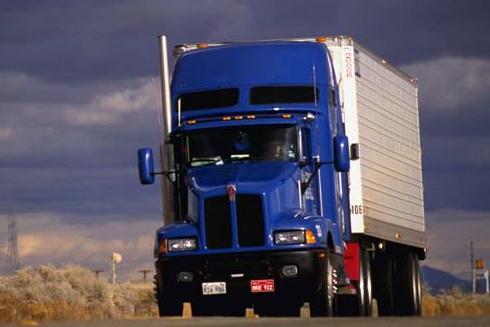
Now the other thing that's important to note on your pre trip inspection is that the location and the time match up with what's on your logbook - if you're keeping a log book.
Those two forms have to match up exactly.
If you get pulled into the weigh scale, pulled over by authorities, they're gonna look and they're gonna make sure that the time in your pre-trip inspection form and the time on your logbook match.
As well, on this form, you have the location for your home terminal up here in the corner.
Sign and date for the driver down in the bottom and I've talked about this in previous videos on log books .
Legal Document
The pre-trip inspection is a legal form.
If you have a crash and there's a legal investigation they're going to look at your pre-trip inspection forms and make sure that you did not detect any defects with that vehicle.
They're going to go back through the pre-trip inspection forms and make sure that the driver didn't note a defect on that vehicle for weeks at length of time and the carrier that you're working for didn't fix that.
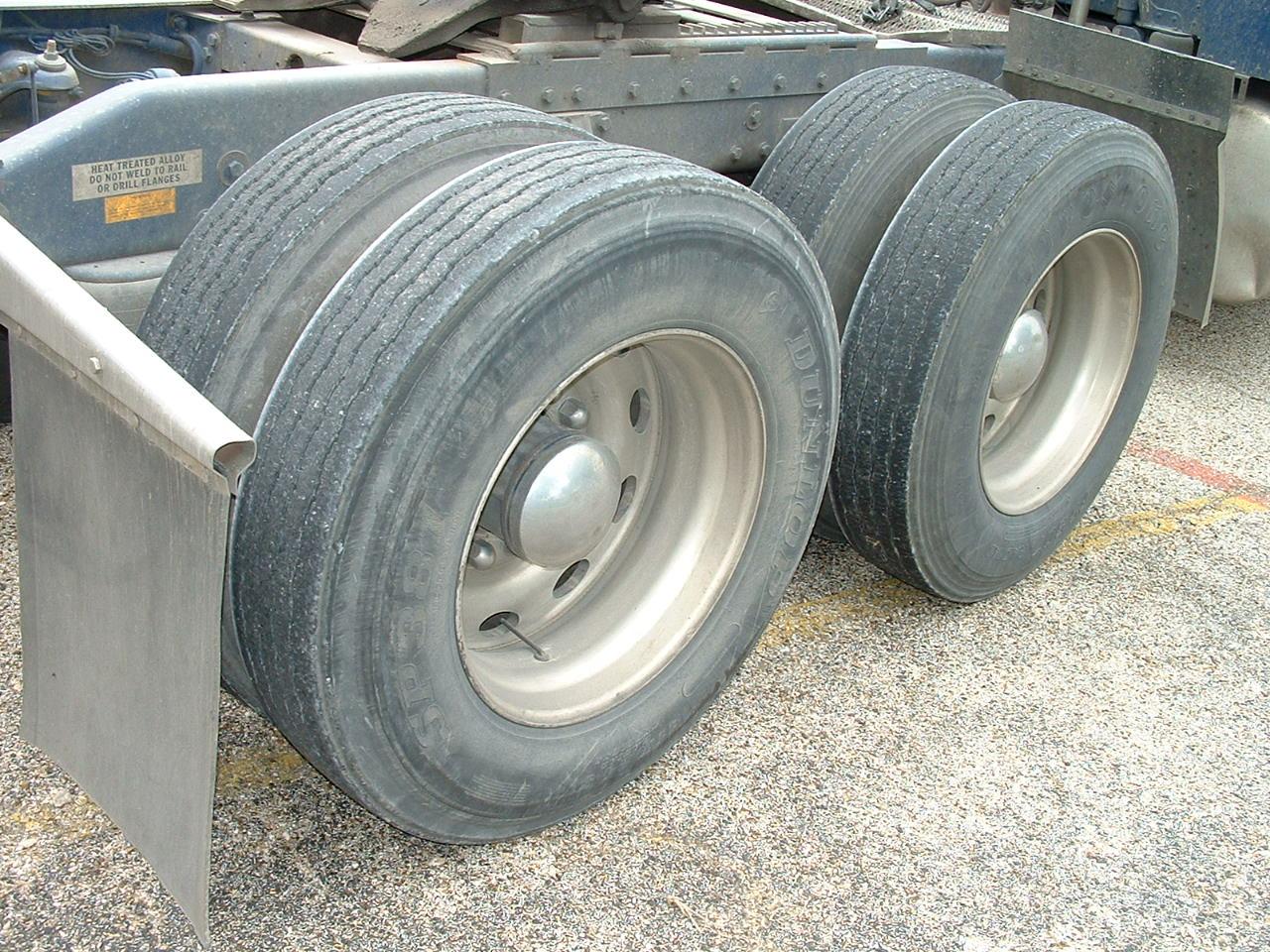
Starting and ending odometer must match what's on your logbook.
So the two things that need to match in your logbook:
1) the location and the time;
2) and the starting and ending odometer.
Sign and date the document.
And then finally, on this log book here, you can see: "above defects need not be corrected for the safe operation of the vehicle."
Also, if something was fixed, you check the appropriate box, or something doesn't need to be fixed, but there was a defect noted.
As well, in this form here, you can see the unit number for the tractor.
So those are two different pre-trip inspection forms .
They're essentially the same information - little bit different.
The one on the bottom of the pre-trip inspection form [logbook] has a location.
It also has signature and date as they both do, but in different locations.

In conclusion, when do you do a pre trip inspection form:
2) every time you pick up new equipment;
3) if you're working the same piece of equipment with another driver.
Pre-trip inspection forms are essentially the same.
They all have the same information, the time that you start, check boxes for "defects need not be corrected for the safe operation of the vehicle."
Note whatever defects there are, check the box that defects noted - check the appropriate box if its lights.
Check the "light" box.
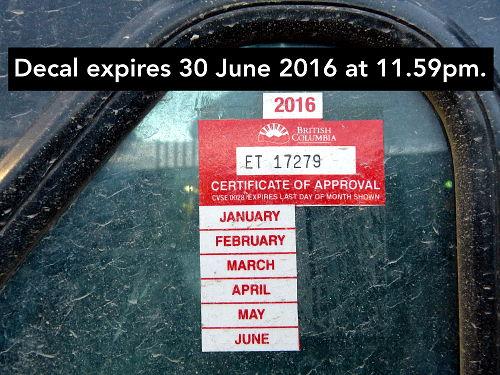
Make a note in the comment.
Sign, date - it is a legal document; starting & ending odometer, and the time on your pre- trip inspection form, and the location must match what's on your logbook.
On the note of post-inspections in British Columbia, the legislation states that you do not have to do a post trip inspection unless you noted some sort of defect or found a defect during the course of your day.
If you note a defect during the course of the day, you can put that information on the same pre-trip inspection form.
You don't have to fill out a new one.
If you did that, you need to do a post-trip inspection.

CLICK to Learn the Fundamentals of a CDL Pre-Trip Inspection
You can note the post-trip inspection on your pre-trip inspection form, but for the most part, it's not required by law in most jurisdictions; however, a lot of times a post-trip inspection can be company policy.
If it's company policy then you'll need to do a post-trip inspection.
And on most of these pre trip inspection forms, there is a spot for a post-trip inspection check box - you just check that.
Finally, if you get some of these old log book forms , there will be a place for your driver's license number.
You no longer have to put your driver's license number in because of freedom of information legislation and identity theft.
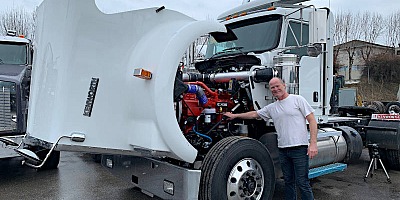
5 Things To Know Before Taking Your CDL Pre Trip Test

CDL Pre Trip Inspection Test Class A
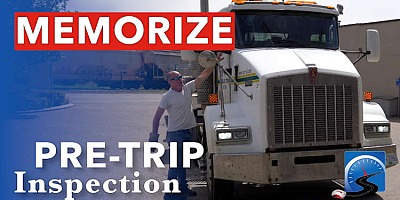
5 Tips to Memorize the CDL Pre Trip Inspection
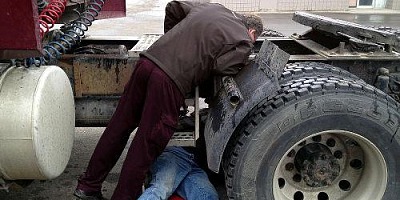
How To Remember Pre Trip Inspection CDL
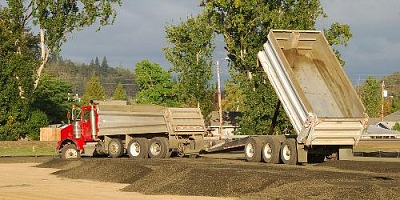
CDL Pre Trip Inspection | The Work Pre-Trip
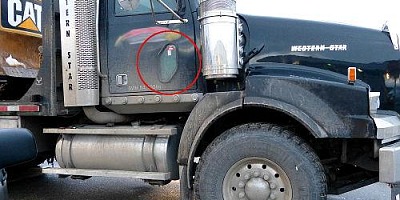
How to Read the CDL Motor Vehicle Inspection Decal

Tips for Avoiding Tire Violations | Roadcheck 2016

CDL Pre-Trip Inspection of Tires to Pass Test

CDL Pre-Trip Inspection Absolutes
© Smart Drive Test Inc. 2024.
Contact Us: [email protected]
Get Your DOT Inspection Checklist

- Free Practice Tests
Commercial Driving
- Introduction
Getting a CDL
- Fees and costs
CDL Types & Permits
Endorsements & Restrictions
CDL Exam Preparation
Written exams
Practical exams
- Skills test
- Pre-trip inspection
- TSA background check
- Retake policy
CDL Maintenance
ELDT Training & Certification
CDL how-to guides
Mastering the CDL Pre-Trip Inspection Exam: A Complete Guide
Learn how to conduct thorough pre-trip inspections with our guide, a critical component for commercial vehicle safety.

Written by Andrei Zakhareuski. With over 16 years of expertise, Andrei leads Driving-Tests.org, a top online resource for driver education. His leadership has established vital partnerships with over 2,600 libraries, educational bodies, and state agencies.
The CDL Pre-Trip Inspection Exam is an integral part of obtaining your commercial driver’s license. This guide covers Class A and Class B pre-trip inspections, provides a checklist, and offers tips for memorizing the inspection process.
Start a free Pre-Trip Inspection practice test:
- Alabama - AL - Alabama Pre-Trip Inspection Practice Test
- Alaska - AK - Alaska Pre-Trip Inspection Practice Test
- Arizona - AZ - Arizona Pre-Trip Inspection Practice Test
- Arkansas - AR - Arkansas Pre-Trip Inspection Practice Test
- California - CA - California Pre-Trip Inspection Practice Test
- Colorado - CO - Colorado Pre-Trip Inspection Practice Test
- Connecticut - CT - Connecticut Pre-Trip Inspection Practice Test
- Delaware - DE - Delaware Pre-Trip Inspection Practice Test
- District of Columbia - DC - District of Columbia Pre-Trip Inspection Practice Test
- Florida - FL - Florida Pre-Trip Inspection Practice Test
- Georgia - GA - Georgia Pre-Trip Inspection Practice Test
- Hawaii - HI - Hawaii Pre-Trip Inspection Practice Test
- Idaho - ID - Idaho Pre-Trip Inspection Practice Test
- Illinois - IL - Illinois Pre-Trip Inspection Practice Test
- Indiana - IN - Indiana Pre-Trip Inspection Practice Test
- Iowa - IA - Iowa Pre-Trip Inspection Practice Test
- Kansas - KS - Kansas Pre-Trip Inspection Practice Test
- Kentucky - KY - Kentucky Pre-Trip Inspection Practice Test
- Louisiana - LA - Louisiana Pre-Trip Inspection Practice Test
- Maine - ME - Maine Pre-Trip Inspection Practice Test
- Maryland - MD - Maryland Pre-Trip Inspection Practice Test
- Massachusetts - MA - Massachusetts Pre-Trip Inspection Practice Test
- Michigan - MI - Michigan Pre-Trip Inspection Practice Test
- Minnesota - MN - Minnesota Pre-Trip Inspection Practice Test
- Mississippi - MS - Mississippi Pre-Trip Inspection Practice Test
- Missouri - MO - Missouri Pre-Trip Inspection Practice Test
- Montana - MT - Montana Pre-Trip Inspection Practice Test
- Nebraska - NE - Nebraska Pre-Trip Inspection Practice Test
- Nevada - NV - Nevada Pre-Trip Inspection Practice Test
- New Hampshire - NH - New Hampshire Pre-Trip Inspection Practice Test
- New Jersey - NJ - New Jersey Pre-Trip Inspection Practice Test
- New Mexico - NM - New Mexico Pre-Trip Inspection Practice Test
- New York - NY - New York Pre-Trip Inspection Practice Test
- North Carolina - NC - North Carolina Pre-Trip Inspection Practice Test
- North Dakota - ND - North Dakota Pre-Trip Inspection Practice Test
- Ohio - OH - Ohio Pre-Trip Inspection Practice Test
- Oklahoma - OK - Oklahoma Pre-Trip Inspection Practice Test
- Oregon - OR - Oregon Pre-Trip Inspection Practice Test
- Pennsylvania - PA - Pennsylvania Pre-Trip Inspection Practice Test
- Rhode Island - RI - Rhode Island Pre-Trip Inspection Practice Test
- South Carolina - SC - South Carolina Pre-Trip Inspection Practice Test
- South Dakota - SD - South Dakota Pre-Trip Inspection Practice Test
- Tennessee - TN - Tennessee Pre-Trip Inspection Practice Test
- Texas - TX - Texas Pre-Trip Inspection Practice Test
- Utah - UT - Utah Pre-Trip Inspection Practice Test
- Vermont - VT - Vermont Pre-Trip Inspection Practice Test
- Virginia - VA - Virginia Pre-Trip Inspection Practice Test
- Washington - WA - Washington Pre-Trip Inspection Practice Test
- West Virginia - WV - West Virginia Pre-Trip Inspection Practice Test
- Wisconsin - WI - Wisconsin Pre-Trip Inspection Practice Test
- Wyoming - WY - Wyoming Pre-Trip Inspection Practice Test
CDL Class A Pre-Trip Inspection
Engine Compartment Inspection
Includes checking for leaks, belt tension, and the condition of hoses, among other components.
Cab Check/Engine Start
Involves inspecting the cab’s interior, gauges, and starting the engine to check for abnormalities.
Brake Check
Focuses on air brake systems, including air brake checks and the parking brake test.
CDL Class B Pre-Trip Inspection
Vehicle Overview
Begin with a general overview of the vehicle, checking for obvious signs of damage or issues.
External Inspection
Inspect all external components, including tires, lights, and mirrors.
Internal Inspection
Check all internal controls, ensuring everything is functional and within reach.
Pre-Trip Inspection Checklist
- Lights and reflector s: Ensure all are clean and functional.
- Engine oil and coolant levels : Check for adequate levels.
- Steering mechanism : Ensure it’s secure and functioning.
- Horn : Test for functionality.
- Windshield wipers : Check for operability and condition.
- Mirror s: Adjust for optimal visibility.
- Emergency equipment : Ensure presence and accessibility.
- Air brake system : Test for leaks and proper pressure.
Tips for Memorizing the Pre-Trip Inspection for CDL
- Create a Routine : Develop a consistent order in which to conduct your inspection.
- Use Mnemonics : Create acronyms or phrases to help remember the steps.
- Practice Regularly : Hands-on practice is the most effective way to memorize the inspection process.
- Visual Aids : Use diagrams or checklists as visual reminders.
Pro Tip : Practice the pre-trip inspection in a real-world setting. The more you perform the inspection in a practical environment, the more natural it will become.
Remember, the pre-trip inspection is not just a test requirement – it’s a fundamental safety practice every commercial driver should master. For more resources and detailed guides, visit Driving-Tests.org .

Secure your CDL with confidence!
Our exclusive CDL Premium program offers comprehensive online training with an ELDT certificate, authentic exam questions, and a solid Pass Guarantee, starting at only $49. Ideal for first-time applicants, seasoned drivers, and those new to the U.S. road rules.
Explore CDL Premium
Was this page helpful?
- Start a free Pre-Trip Inspection practice test:
- CDL Class A Pre-Trip Inspection
- CDL Class B Pre-Trip Inspection
- Pre-Trip Inspection Checklist
- Tips for Memorizing the Pre-Trip Inspection for CDL
Complete pre-trip inspection checklist for truck drivers
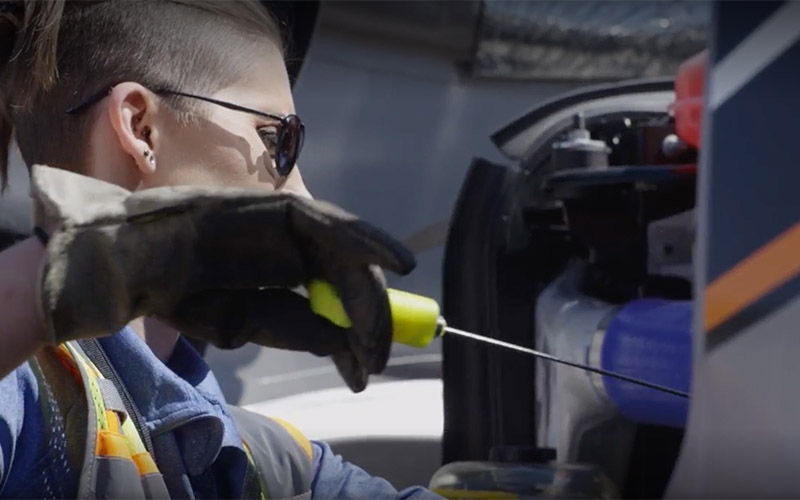
By The Schneider Guy
Estimated reading time: 4 minutes
As a truck driver, performing a CDL pre-trip inspection is one of the most common and repeated tasks you will complete. Pre-trip inspections help truck drivers ensure their tractor and trailer are safe to operat e before hitting the road.
Keep reading to learn what a p re -trip inspection is and what should be on a p re -trip inspection checklist .
What is a pre-trip inspection?
A pre-trip inspection includes checking over the tractor and trailer a truck driver will be operating . A pre-trip should be completed before the operation of a vehicle :
- At the beginning of a driver’s shift.
- Any time a new trailer is picked up.
- After a 10-hour break.
A thorough inspection usually takes anywhere from 30 minutes to one hour and should be logged as on-duty, not driving (line 4) .
How to complete a CDL pre-trip inspection
CDL pre-trip inspection checklist
1. passenger-side engine: .
- Air filter housing: Secure mounting, cover in place.
- Windshield washer fluid reservoir: No leaks, proper fluid level.
- Turbocharger: No oil or exhaust leaks.
- Engine air ductwork: No cuts, clamps secured.
- Alternator: Mounting secured, no broken or loose wire.
- Accessory drive belt: Not cracked or frayed.
- Air conditioner compressor: Secure m ounting .
2. Front brakes (covers all five brake components):
- Brake drum: No cracks.
- Brake lining: No cracks or damage.
- Slack adjuster: Proper angle to the brake chamber, clevis and cotter pin intact.
- Brake air line: No bulges or cuts, fitting tight .
- Brake chamber: Mounting bolts secured, band clamp secured.
3. Front wheel:
- Tire: ABCs (abrasions, bulges, cuts), pressure = 120 PSI, tread depth = 4/32 min ( DOT ) .
- Wheel: Not cracked or bent.
- Hub oil: Not leaking, at proper level – if it’s a sealed unit, can’t check level.
- Oil seal (outer): Not leaking.
- Valve cap: Not missing.
- Lug nuts: None missing, no streaks or shiny areas, none loose.
4. Driver side of engine:
- Radiator brace: No cracks or missing bolts.
- Radiator: Not leaking, secure mounting.
- Water pump: No cracks, not loose or leaking.
- Fuel water separator/filter: Not leaking, secure mounting.
- Pitman arm/drag link: Not cracked, castle nut secured with cotter pin.
- Steering gear box: Secure to frame, not leaking.
- Power steering reservoir: Secure mounting , no leaks, proper level.
- Dipstick: Right level, secured after check.
- Steering shaft: Secure, not loose or damaged.
- Fuel pump: No cracks, not loose or damaged.
- Oil filler cap: Secure, no cracks.
- Engine coolant reservoir: No leaks, proper fluid level.
5. Steer axle suspension:
- U-bolts: No cracks, no loose or missing nuts.
- Leak spring: No cracks, not loose or shifting.
- Tie rod: Secured with castle nuts and cotter pins.
- Shock absorber: Secure mounting, not leaking oil.
- Axle: Not cracked.
6. Rear suspension:
- Spring mount: No cracks, secure mounting.
- Tire: ABCs (abrasions, bulges, cuts), pressure = 110 PSI, tread depth = 2/32 min ( DOT ) .
- Airbag (bellows): Fully inflated, secure mounting, not ruptured.
7. Side of cab:
- Mirrors: Secure m ounting , no broken glass.
- Doors: No damage, glass not broken, hinges secured, opens and closes well.
- Lights and turn signals: Working, not cracked.
- Steps: Mounted, secured to skirting.
- Battery box: Secure m ounting , cover latched.
- DEF cap: Cap secured.
- Fuel cap/tank: Gasket in place, vent in place, chain secures the cap to the tank.
- Side skirting: No damage, panels secure.
- Side box: Secured, safety triangles present.
- Side of sleeper berth: No body damage.
- Sleeper berth window: No cracks.
8. Rear of cab:
- Electrical cord: No bare wire, no corrosion, check the plug at the end of the cord.
- Air line: Not tangled or worn, rubber grommets not worn, fittings tight.
- Cab shock absorber: Secure mounting, not leaking oil.
- Cab airbag (bellows): Not ruptured, securely mounted.
9. Driveshaft/rear frame:
- Driveshaft: Not cracked.
- Universal joint: Not cracked, not missing bolts, no shiny areas.
- Differential: Not leaking oil.
- Frame: Straight, no non-factory welds.
10. Fifth wheel area:
- Pivot pin: Keeper pin and cotter key intact.
- Slider lock pins: Fully engaged.
- Release arm: Not bent.
- Slider rail: No broken welds or missing bolts.
- Slider stop blocks: Welds not broken, not missing bolts.
- 5th wheel platform: Well-greased, tilted down.
11. Front of trailer:
- Top rail: No cracks or collision damage.
- Clearance lights: Not broken, working properly.
- Registration: Not missing, readable.
- Document box: Not missing or loose.
- Air line /glad hands: No bulges or cuts in air lines, rubber grommets not damaged on glad hands.
- Electric hook up: No broken pins, cover intact.
- PM sticker: Current, legible.
- Height sticker: Legible, legal for route.
- Placard holder: Not broken or missing rivets.
- Tracking device: No cracks or collision damage.
12. Side of trailer:
- Top rail: Not cracked, no collision damage.
- Clearance light: Not broken, operational.
- Bottom light: Not cracked, no collision damage, no missing bolts.
- Landing gear: Legs straight, no broken welds in bracing, sand pads secured and clean handle in cradle.
- Reflector tape: Clean.
- Side panels: No holes or cuts, no missing rivets.
13. Rear of trailer:
- Latches: Secured, not damaged.
- Lights: Not broken or missing, operational.
- Splash guard: Brackets and guard secured.
- License plate: Secure and clean, light is working.
- Bumper: Not damaged, no broken welds.
- Door hooks: Not loose, no missing bolts.
- Hinges: Not cracked, no missing bolts on both sides.
- Door seals: No separation, no rubber tubing sticking out.
14. Trailer suspension:
- Air line: No bulges or cuts, fittings are tight and not rubbing.
- Axle: Not bent or broken.
- Clevis pin/cotter key: Not missing.
- Slack adjuster: Proper angle, clevis pin and cotter pin intact.
- Brake linings: Minimum of ¼ inch thick, not cracked.
- Brake drum: Not cracked.
- Tire: (ABCs), tread depth = 2/32 , air pressure = 110 PSI.
- Spring: Not broken, not shifted.
- Spring mount: No broken welds.
- U bolts: Not loose, not cracked.
- Torque rod: Secure mounting, bushings intact.
- Spring brake chamber: Secure m ounting , band clamp secure.
15. Gauges/inside the truck:
- Fuel: Matches visual when looking in the tank.
- Def level: Maintain a minimum of one light bar.
- Oil pressure: 25-50 PSI.
- Speedometer: 0-60 MPH.
- Air pressure: 90-120 PSI.
Please note that the list above is just an example. It is important to remember the type of driver you are, the company you work for and the type of truck you drive can impact your CDL pre-trip inspection . Be sure to consult your company guidelines or speak with your leader for more information on your post-trip inspection requirements.
Get more great driving tips and guides.

Schneider Guy loves the "Big Orange." He's passionate about the trucking industry and connecting people to rewarding careers within it. He's been the eyes and ears of our company since our founding in 1935, and he's excited to interact with prospective and current Schneider associates through "A Slice of Orange."
Related posts

8 CDL Road Test tips to help you pass
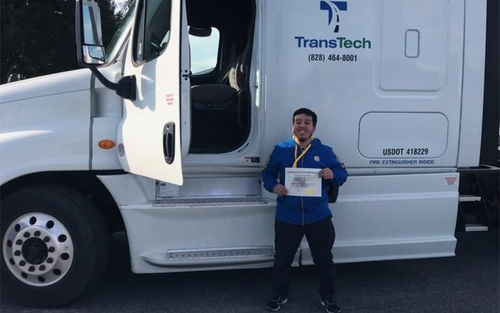
How hard is it to get a CDL?

How to get your CDL – 7 simple steps for new truck drivers


- All Companies
- Driver Training
- All Freight Types
- Lease/Purchase
- Message Board
- Truck Driver Salary
- How to Become A Truck Driver
- Will I Be Successful?
- Truck Driving Schools
- CDL Practice Tests
- Get Your CDL
- Get Your First Truck Driving Job
- Your First 100,000 Miles
- Advanced Tips
- Sign Up Here
Select Location x
Please tell us your location.
Location not set
The Complete Pre-Trip Inspection Checklist
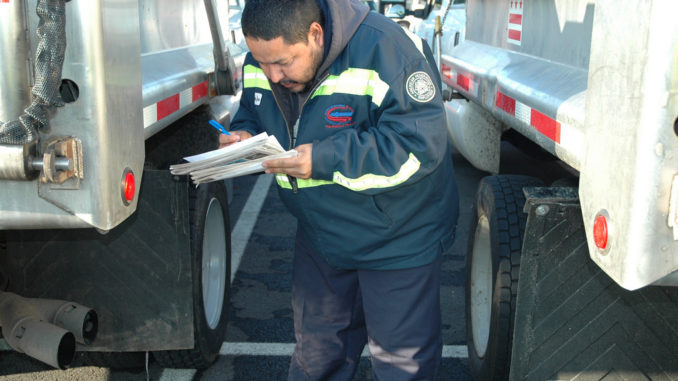
Due to heavy memorization, the pre-trip inspection is one of the hardest aspects of the CDL test. Also called the “Vehicle Inspection Test,” the pre-trip is one of the tests that trucking students fail the most.
With this pre-trip inspection checklist, we tell you everything you need to know and what you need to check for.
Engine Compartment – What to Check For:
When checking the engine compartment, you always want to make sure the following components are properly mounted and secured. You should also make sure they are not cracked, bent, or broken. The items you need to check for include:
Belt-Driven Alternator
All of the wires are connected. The belt is not cracked or frayed, and the free play on the belt is between ½ to ¾ of an inch.
Belt-Driven Water Pump
The free play on the belt is between ½ to ¾ of an inch, and all the hoses running to and from the water pump are tightly clamped. Ensure nothing is leaking.
Brake Chamber
The brake chamber is not leaking air.
The brake drum is properly mounted and secure.
The brake hose is rubber; it is not cracked and is not leaking air.
Brake Lining
Check for oil or debris on the lining. There should be at least ¼ of an inch of friction material.
Caste Nuts and Cotter Pins
All three caste nuts and cotter pins are present.
Coolant Reservoir
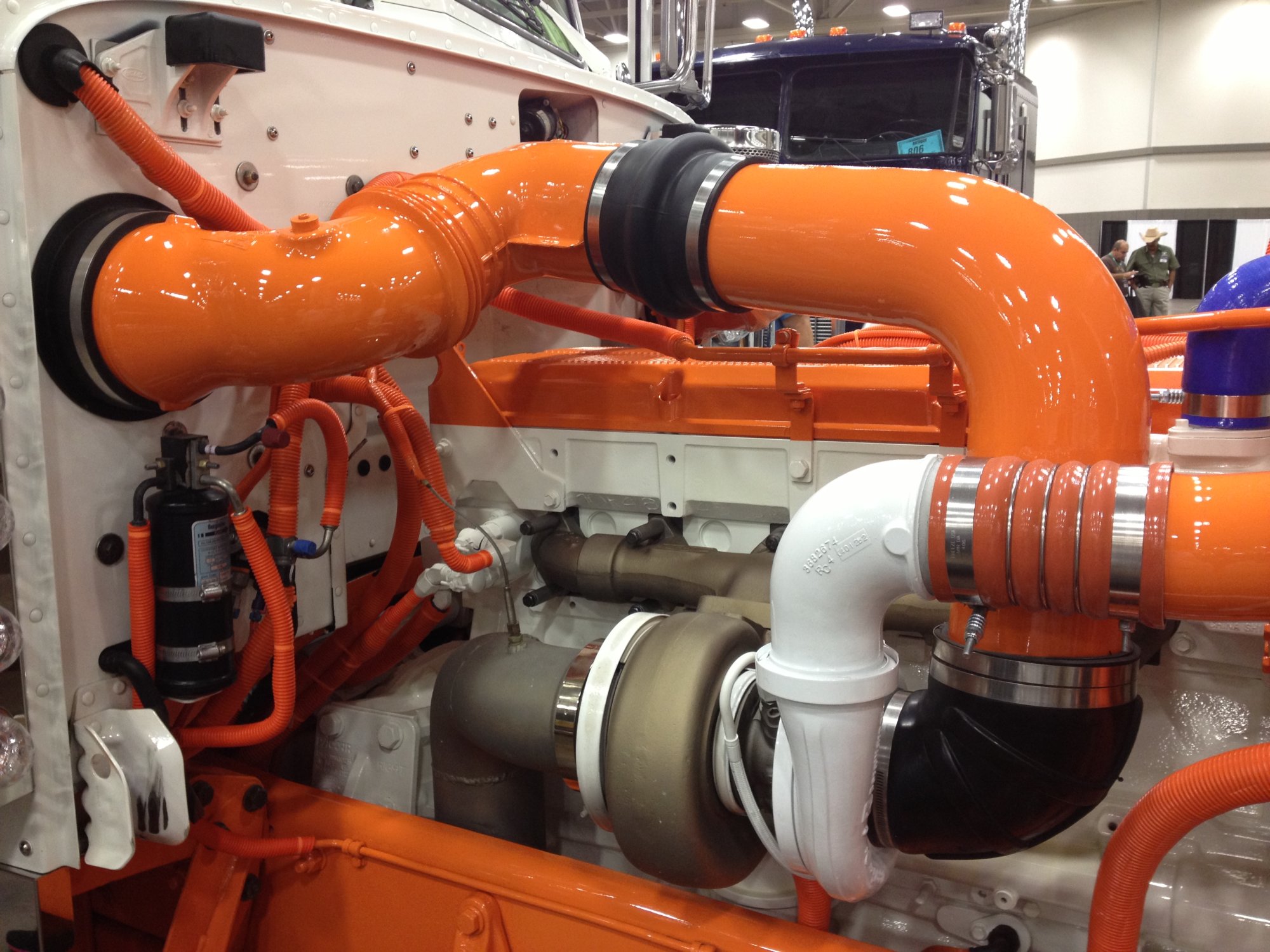
The reservoir is not leaking and is filled to the manufacturer’s specifications.
The drag link is properly mounted and secure, and not cracked, bent or broken.
Gear Box and Hoses
The gear box and hoses have no abrasions, bulges or cuts, and are not leaking.
Gear-Driven Air Compressor
The air compressor is properly mounted and does not leak.
Gear-Driven Power Steering Pump
The steering pump is properly mounted and not leaking.
General Hoses (Passenger and Driver’s Side)
The hoses are secure at both ends and are not leaking. There are no abrasions, bulges, or cuts.
The hub seal (or axle seal) is leaking and is filled to the manufacturer’s specifications.
Leaf Springs
None of the leaf springs have shifted or are bent or broken.
There are no signs of leaks under the truck.
There are no lug nuts missing. There are no rust trails, powder residue, or cracks around the bolt holes.
The oil level is filled to the manufacturer’s specifications.
The pitman arm is properly mounted and secure. It is not cracked, bent, or broken.
Power Steering Fluid Reservoir
The power steering reservoir is not leaking and is filled to the manufacturer’s specifications.
The rim does not have any unauthorized welds.
Shock Absorber
The shock absorber is not leaking. If it is leaking, the leak will be at the point where the top and bottom portion of the shock meet.
Slack Adjuster and Push Rod
With the brakes released and pulled by hand, the push rod does not move more than one inch.
Spring Hanger
The spring hanger is properly mounted and secure.
Steering Column
The steering column is properly mounted and secure. It is not cracked, bent, or broken.
There are no abrasions, bulges, or cuts on the tread or sidewalls. Tread depth should have a depth no less than 4/32 of an inch. Tires are properly filled to the manufacturer’s specifications. This can be checked with an air gauge.
The tie rod is properly mounted and secure, not cracked, bent, or broken.
Make sure all are accounted for.
Driver Door Fuel Area-What to Check For:
Remember – during the pre-trip inspection, you want to make sure these items are properly mounted and secure. Look for cracks, bends, and breaks.
The actual airbag has no abrasions, bulges, cuts, or leaks. The airbag is not missing mounting bolts.
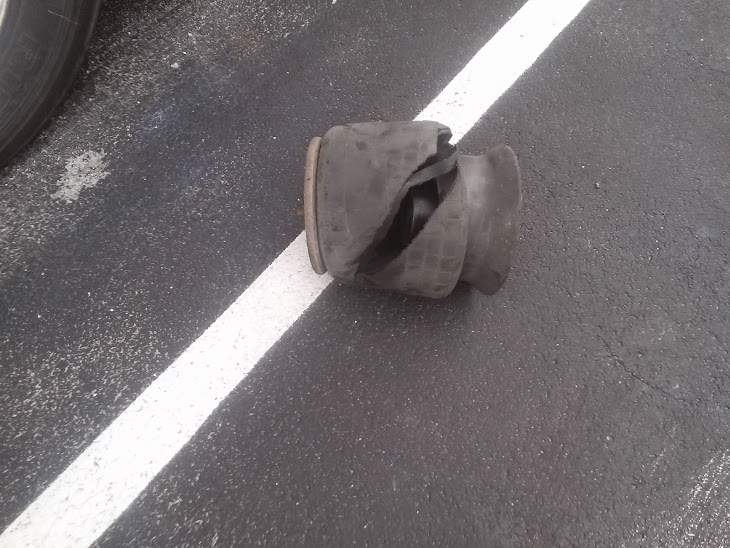
The axle seal is not leaking and is filled to the manufacturer’s specifications.
The brake drum is secured properly and has no cracks, bends or breaks.
Check the brake hose at both ends to make sure it is not leaking air.
There is no oil or debris on the brake lining. There is at least ¼ of an inch of friction material.
Catwalk and Steps
The cat walk and steps are clear of any loose objects.
Door and Hinges
The doors open, close, and latch properly. Door seals should not be worn, torn, or rotten.
Drive Shaft
The drive shaft is not twisted, and the u-joints are free of any debris.
The tread and sidewalls have no abrasions, bulges, or cuts. The tread depth is no less than 2/32 of an inch. Tires are properly filled to the manufacturer’s specifications. This can be checked with an air gauge.
Exhaust System
The exhaust system shows no signs of leaks.
Frame and Cross Members
There are no unauthorized holes or welds. Bundle up the cross members to ensure none are missing.
Fuel is not leaking from the tank, and the cap is on tight.
There are no rust trails, loose bolts, powder residue, or cracks around the bolts.
Mirrors are clean, with no cracks or chips.
The mud flap is secured properly, with no cracks, bends and breaks.
There are no unauthorized welds.
The shock absorber is secure at both ends and not leaking. If it does leak, it is preferable to leak in the middle.
There is proper spacing between the tires and there is nothing stuck.
The spring arm is secure at both ends.
Spring Mount
The spring mount is secure at both ends.
The torque arm is secured properly, with no cracks, bends or breaks.
No u-bolts are missing.
Coupling Area-What to Check For:
Air lines should be secure at both ends with no abrasions, bulges, or cuts. They should not be leaking, dragging, or tangled.
Make sure the apron is properly mounted and secure. Look for cracks, bends, and breaks.
Make sure there is enough space between the tractor mud flap and the trailer landing gear, so that they don’t hit each other when making a turn.
Electric Line
The electric lines are secure at both ends. There are no abrasions, bulges, cuts, or exposed wires.
There is no space between the apron and the skid plate.
The seals are in good condition with no cracks, signs of rotting, or leaking air.
The king pin is properly mounted and secure, without cracks, bends and breaks.
Locking Jaws
Physically check that the locking jaws are fully locked around the king pin.
Mounting Bolts
No mounting bolts are missing.
The platform is properly mounted and secure, without cracks, bends and breaks.
Release Arm
The release arm is in the fully locked position.
The skid plate is properly lubed.
Sliding Fifth Wheel Locking Pin
The pin is in the fully locked position.
Trailer- What to Check For :
The airbag has no abrasions, bulges, cuts or leaks, not missing any mounting bolts.
The brake chamber is properly mounted and does not leak air.
The brake hose is secure at both ends with no abrasions, bulges, cuts, or leaks.
No oil or debris on the brake lining and at least ¼ of an inch of friction material.
No missing cross members.
Header Board
The header board does not have any holes or missing rivets.
Landing Gear
The landing gear is fully raised and the cradle handle secure.
No rust trails, powder residue, or cracks around the bolt holes.
The rims do not have any unauthorized welds.
Rear Door and Hinges
The rear door opens, closes, and latches properly. Door seals are not worn, torn, or dry rotten.
The shock absorber is secure at both ends with no leaks.
When the brakes are released and pulled by hand, the push rod does not move more than one inch.
Tandem Frame and Release
Release handle and locking pins are in the fully locked position.
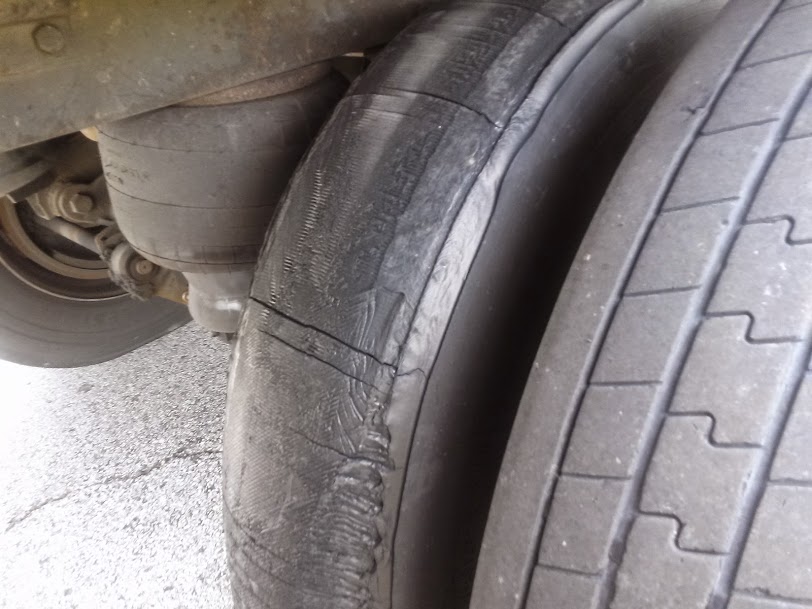
Trailer Tire
There are no abrasions, bulges, or cuts to the tread or sidewalls. Tread depth is no less than 2/32 of an inch. The tire is properly filled to manufacturer’s specifications and checked with an air gauge.
Light Check
There are five locations where you must check your lights. These include:
- Front of the truck
- Both sides of the truck
- Rear of the truck
- Both sides of the trailer
- Rear of the trailer
The five functions are:
- Left turn signal
- Right turn signal
- Four way flashers
- High/low beams
- Brake lights
Inspection and Brake Tests-What to Check For: In-Cab
The last section is In-Cab Inspection and Brake Tests. For the In-Cab Inspection you once again want to make sure all of the following components are properly mounted and secure. As well as the following:
Air Brake Test
There are three stages to an air brake test:
- Applied Pressure Test – When doing the Applied Pressure Test, you want to build the air pressure to governor cut out. Put the truck in the lowest gear, turn the engine off and immediately turn it back on. Push in the tractor and trailer valves which then release the parking brakes. Push and hold the brake pedal, allowing the gauges to stabilize. When the gauges have stabilized, announce the Primary and Secondary PSI. Listen for air leaks while doing this.
- Warning Light and Buzzer – Pump down on the brake pedal until the warning light and buzzer comes on. This is typically at or before 60 PSI.
- Tractor/Trailer Protection Valve Pop Out – Pump down on the brake pedal until the tractor and trailer protection valves pop out, this will be between 20 and 40 PSI.
Air Pressure Gauges
The air pressure gauges build to governor cut out.
Emergency Equipment
Truck has a fire extinguisher, three red reflective triangles, and spare electrical fuses.
Heater and Defroster
Demonstrate both the heater and defroster are working properly.
Horns (Air Horn and City Horn)
Blow both horns to make sure they are working.
Lighting Indicators
Check the left turn, right turn, four way flashers and high beams; also point these out on the dashboard.
With the transmission in neutral, fully depress the clutch. Turn the key on, check the ABS light, announce when it comes on and off, and start the engine.
The seat belt is not ripped or frayed and adjusts and latches properly.
Oil Pressure Gauge
The engine oil pressure gauge should rise to normal operating range.
Parking Brake
- Trailer Parking Brakes – Set the trailer brake, release the tractor brake, and tug lightly on the trailer.
- Tractor Parking Brakes – Set the tractor brake, release the trailer brake, and tug lightly on the trailer.
Service Brake Check
Release both the tractor and trailer brakes. Drive at idle speed. Apply the service brake to make sure you come to a complete stop and that it doesn’t pull to the left or right when applying the brakes.
The voltmeter is charging between 13 and 14 volts.
Water Temperature Gauge
The water temperature gauge rises to normal operating range.
Windshield and Mirrors
The windshield and mirrors are clean, with no obstructions and in proper adjustment.
Windshield Wipers and Washers
Demonstrate the wipers and washers are working properly by spraying the windshield.
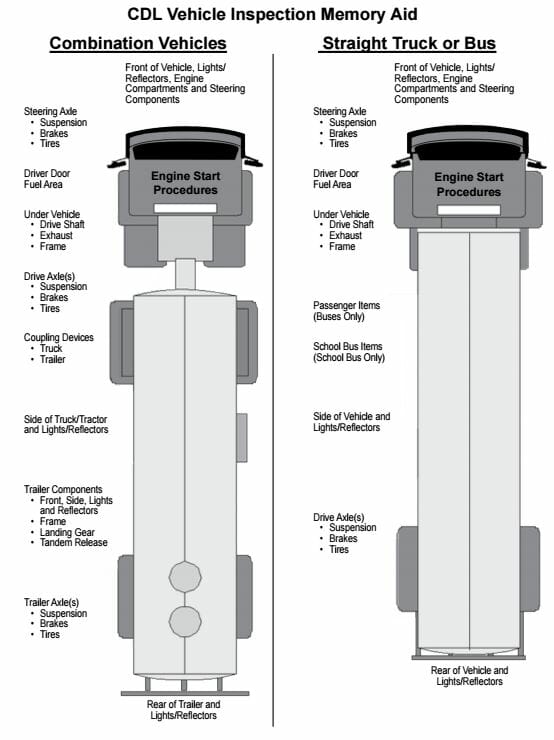
This is a really nice complete list, very useful.
Comments are closed.
Contact ClassADrivers.com
Please use the form below to contact our customer service or sales team.
You can also reach us at (888) 830-2326. Our normal business hours are Monday-Friday 8 a.m. to 5 p.m. (Pacific Time).
Our business address is: Attn: Class A Drivers MH Sub I, LLC dba Internet Brands 909 N Pacific Coast Highway, 11th Floor El Segundo, CA 90245
By clicking the ["Send"] button, you agree to our Terms of Use and Privacy Policy , and to the use of cookies described therein, and you also consent to the collection, storage, and processing of your data in the United States where the level of data protection may be different from that in your country.
- 🙋🏻 We're hiring!
- Refer a Friend
Vehicle Inspection Form Template
If you’re not utilizing a thorough, driver-friendly inspection form, you may be sacrificing important fleet data on a daily basis. Our inspection form template ensures your drivers know exactly what to look for on their pre-trip vehicle inspections and establishes a historical record of each asset’s condition.
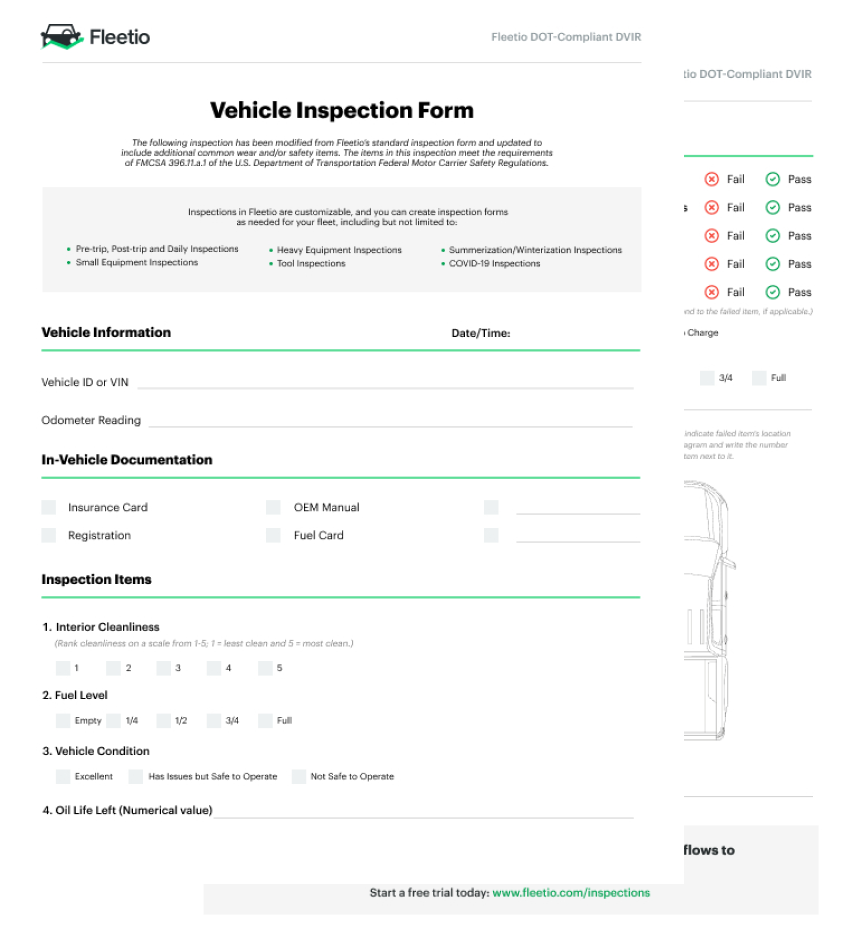
What is a DVIR?
A driver vehicle inspection report (DVIR) is an inspection form that a vehicle operator fills out at the end of a trip to let their fleet manager know of any defects, issues or faults with the vehicle. A thorough DVIR, when used effectively, allows fleets to surface potential issues before they lead to unsafe operating conditions or even vehicle failure.
What should be checked in a pre-trip inspection?
When performing a pre-trip inspection, it's best to have a set checklist that guides the operator on a thorough inspection of the entire vehicle. Your pre-trip inspection checklist should cover general vehicle information (odometer/date/time), interior elements (horn/brakes/documentation), exterior elements (lights/tires/body), and mechanical elements (oil level/battery/odd sounds). By inspecting every element of the vehicle, you're more likely to catch an issue and schedule service before the part fails.
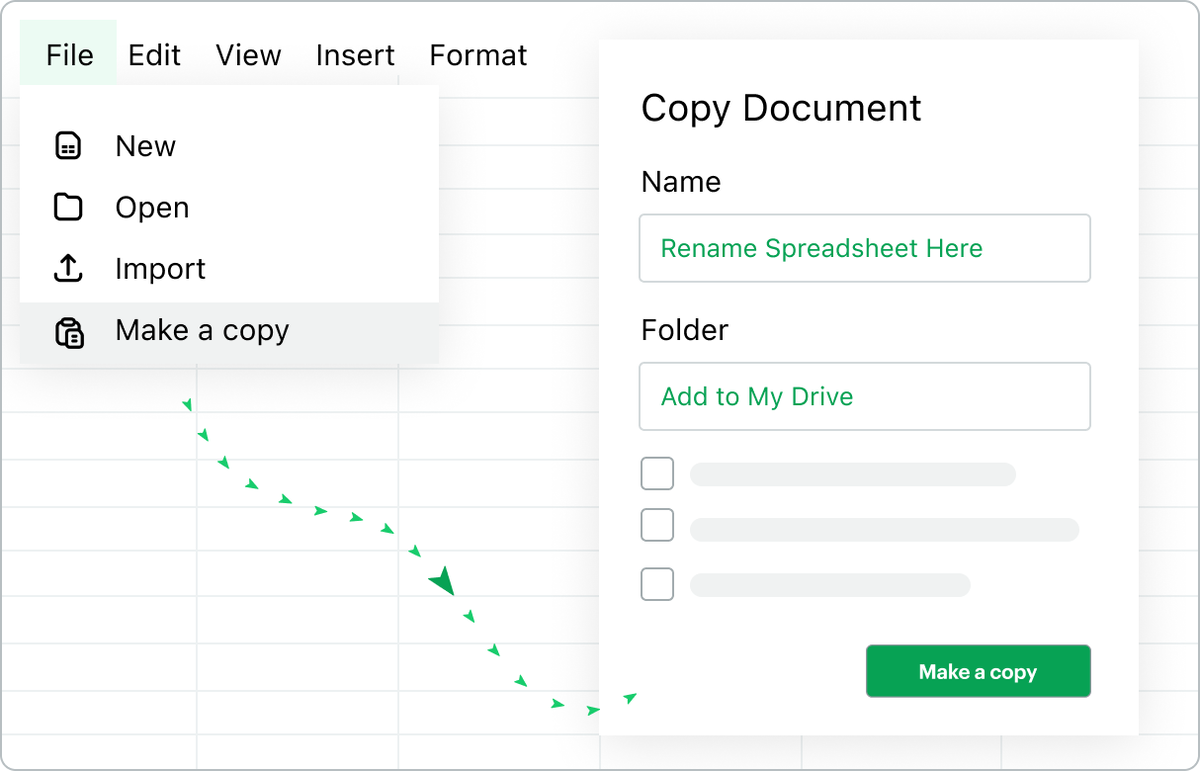
How to use Fleetio’s free vehicle inspection template
Our vehicle inspection form is a PDF with pre-filled inspection items, laid out in a standard pass/fail format for ease of use and efficiency. The items in this inspection meet the requirements of the DOT's FMCSA inspection regulations.
Print out copies of this sheet as needed or create a notepad from the form to provide your operators with a fleet-wide standard for inspections.
Log and track information
With this free pre-trip inspection form, you will be able to log and track information like:
FMCSA-compliant inspection criteria
This form was designed in compliance with FMCSA 396.11.a.1 of the U.S. Department of Transportation Federal Motor Carrier Safety Regulations.
Pass/fail checklists for common vehicle components
Ensure clarity and efficiency in your driver's responses with simple pass/fail checklists.
Vehicle condition, fuel level and odometer readings
Gather vehicle information outside of standard mechanical inspections to identify high-usage vehicles or upcoming service needs.
Location of failed items with vehicle diagram
Failed inspection items can be circled on a standard vehicle diagram to allow your technicians to quickly identify the issue and get the vehicle repaired.
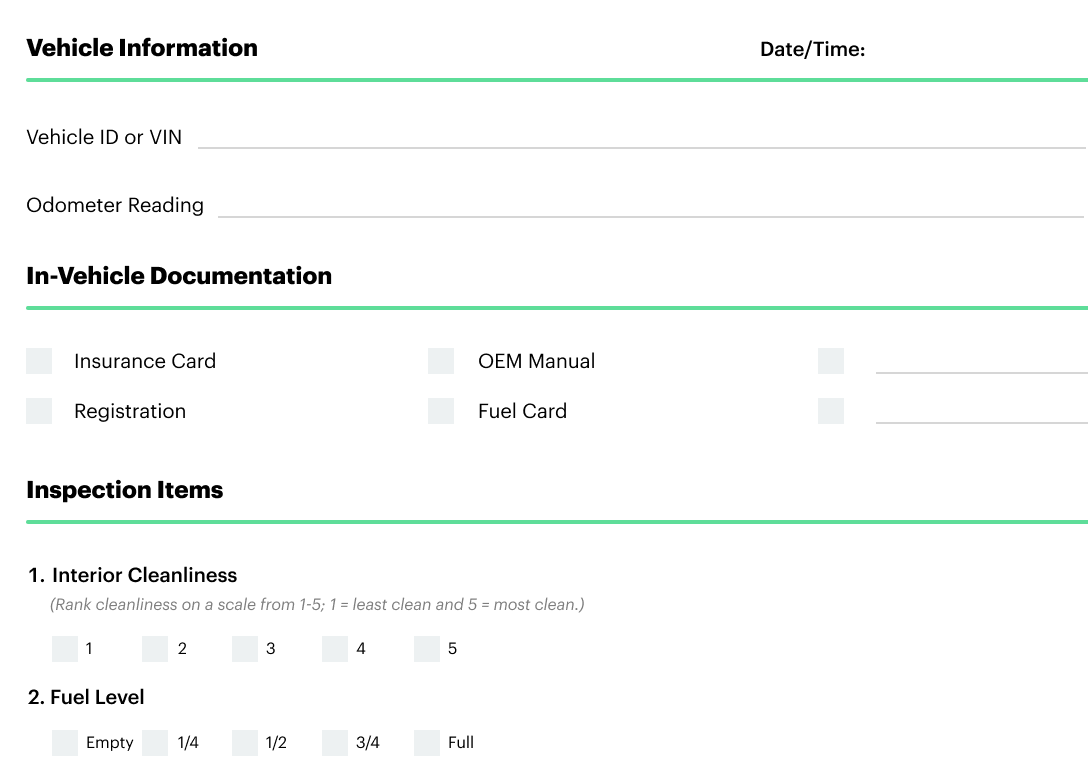
Manage your driver vehicle inspections with Fleetio
If you're tired of having to manually turn your driver's inspections into work orders, then it's time to automate your fleet's maintenance process. Fleet maintenance software allows your drivers to conduct their pre-trip inspections with a DVIR app . When an inspection item is marked as failed, you will immediately get a notification sent to your email, allowing you to create a work order and begin the maintenance process.
What customers are saying
" I find this app saves me about 1.5 hours per day in the evening when I sit down to catch up all my files. If you use it as intended, it will be a huge benefit! "
Mark Dominey Trucking
" Fleetio is user friendly; I'm not the most technologically savvy individual but the training sessions provided were more than enough to help me feel comfortable using the software myself "
" Bringing in a tool that brings all the data into one centralized location to make informed decisions and help guide our business was critical. "
" We like being able to to add our landscaping assets as well as our vehicles to Fleetio. "
Cape Fear Landscaping
Read more customer reviews
Ready to get started?
Join thousands of satisfied customers using fleetio.
Questions? Call us at 1-800-975-5304
or Start a Free Trial
An official website of the United States government Here's how you know
Official websites use .gov A .gov website belongs to an official government organization in the United States.
Secure .gov websites use HTTPS A lock ( Lock A locked padlock ) or https:// means you’ve safely connected to the .gov website. Share sensitive information only on official, secure websites.
pre-trip inspection
This page shows Department of Transportation content pertaining to a specific tag. If you cannot find what you’re looking for on this page, please use the search box in the top right of our website.
Question 1: Must a driver prepare a written report of a pre-trip inspection performed under §392.7?
§392.7 Equipment, inspection and use.
Guidance: No.

Smart Truck
Route optimization, back office, customer service, outreach & education, compliance and sustainability, next generation technology, by industry, knowledge library, about routeware.
- recollect.net
- routeware.co.uk
- goeasyroute.com
- andrewssoftware.com
- recyclist.co
- compliancepublishing.com
Conducting Driver Vehicle Inspection Reports (DVIR) in Waste and Recycling – 5 Advantages
- By Aidan McLennan
- March 22, 2023
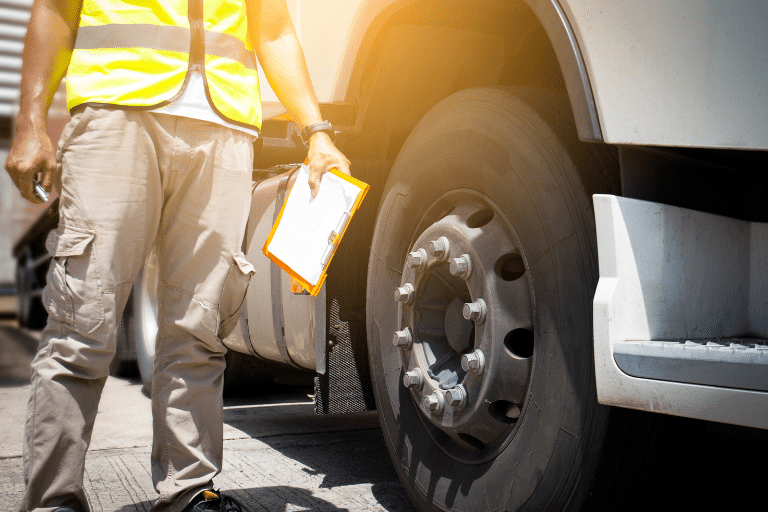
Regulations require fleet operators to create and maintain records relating to vehicle safety. Learn about how Routeware is making compliance with these easier and more efficient, and other benefits through digital technology.
Heavy-duty trucks are the backbone of a waste and recycling collection operation. To ensure the safety of both drivers and the public, all commercial fleets are subject to federal regulation covering the inspection, repair, and maintenance of trucks.
Whether you are a municipality or private hauler, as a fleet operator you need to ensure that your waste and recycling trucks are working correctly and safe to use. This is where Driver Vehicle Inspections Reports (DVIR) come in.
What federal regulations cover Driver Vehicle Inspection Reports (DVIR)?
In the US, trash and garbage trucks fall under the definition of commercial motor vehicles (having a gross vehicle weight or gross combination weight of 10,001 pounds or more) and as such are subject to the regulations governed by the Federal Motor Carrier Safety Administration (FMCSA) covering inspection, repair and maintenance and found in Title 49 CFR (Code of Federal Regulations) Part 396. The requirements are detailed specifically in part 396.11 and 396.13.
The regulations state that every motor carrier shall maintain the driver vehicle inspection report, the certification of repairs, and the certification of the driver’s review for three months from the date the written report was prepared. Further information can be found on the U.S. Dept. of Transportation’s Federal Motor Carrier Safety Administration’s (FMCSA) website at www.fmcsa.dot.gov .
In Canada, a daily pre-trip (Schedule 1) inspection is required, and drivers must carry an inspection schedule and the last inspection report. Where the driver identifies a minor issue, it must be reported to the fleet operator on the inspection report. Where a major issue is identified, the truck must be taken off the road for corrective maintenance.
What are the DVIR requirements for waste haulers?
The two key stages in the daily inspection routine are the post-trip and the pre-trip checks.
Post-Trip . At the end of each shift, the driver of each vehicle should perform a post-trip check and complete a Driver Vehicle Inspection Report (DVIR). This report lists any defects that would affect the safe operation of that truck. This outgoing driver should sign the DVIR. At a minimum, the report must cover the following parts and accessories:
- Service brakes including trailer brake connections
- Parking brake
- Steering mechanism
- Lighting devices and reflectors
- Windshield wipers
- Rear vision mirrors
- Coupling devices
- Wheels and rims
- Emergency equipment
If a driver identifies an issue during the inspection this must be recorded. Before the truck can be used again, the part must be repaired or replaced by the maintenance team. The inspection report should then be signed by the mechanic to verify that corrective action has been taken or to indicate that no action was necessary.
Pre-Trip . At the start of the next shift, the incoming driver is required to review the vehicle’s Driver Vehicle Inspection Report (DVIR) from the previous shift. If the DVIR does not list any defects, the driver will sign the report to confirm they have reviewed it. The driver can then move on to their own pre-trip inspection of the truck.
Where vehicle defects were identified on the DVIR, before undertaking their own pre-trip check, the driver must confirm that each defect has been repaired or corrected, or that no repair was necessary, which will be indicated by the mechanic’s signature.
Why use Integrated Digital Driver Vehicle Inspection Reports (DVIR)?
Many haulers still have paper DVIR forms and processes, while others have switched to an electronic DVIR system with handheld devices. Smart haulers however should be looking to implement an electronic DVIR solution as part of their on-board computing platform.
An integrated, digital DVIR solution offers some key advantages for haulers:
Easier for drivers
More careful inspections, consolidated safety information, less hardware, flexible to change.
That’s the end of our article today. Want to learn more? Let’s talk.
Routeware Insights
Sign up for tech tips for smart cities & trucks.
Join over 17,000 people who receive our insights on how to drive better performance and better serve your communities – directly to their inbox.

Routeware – Accessible, Secure, & Safe (2024 Update)
At Routeware we understand how damaging a data breach or lawsuit can be. Not only financially, but to public trust and goodwill. Routeware – Accessible, Secure, & Safe.
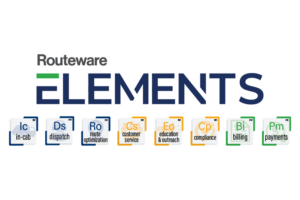
Routeware, Inc. to Launch Routeware Elements at Waste Expo 2024
Routeware Elements for Waste Collection looks to simplify the way systems are implemented and operated, with a single, streamlined experience. By making it more intuitive for both internal and external users to access necessary functions and information…

Unique Use Cases For Our Waste Management Mobile Application
Unique Use Cases for disaster management situations & emergency response, custom widgets, and twists. See our waste management mobile application today.

Earth Day – How We Help
With Earth Day coming up next week on April 22, Routeware wants to reiterate our commitment to this planet and all that live on it. Our overarching sustainability mission is to cut carbon emissions, reduce paper use, and reduce the amount of waste that goes into the landfill.
Ready to improve and enhance your waste operations?
© 2024 Routeware, Inc. All Rights Reserved
Drive performance, service, and sustainability with our 360° Fleet Management and Engagement Platform for waste and recycling.

Elektrostal
City in moscow oblast, russia / from wikipedia, the free encyclopedia, dear wikiwand ai, let's keep it short by simply answering these key questions:.
Can you list the top facts and stats about Elektrostal?
Summarize this article for a 10 year old
Top Things to Do in Elektrostal, Russia - Elektrostal Must-See Attractions
Things to do in elektrostal.
- 5.0 of 5 bubbles
- 4.0 of 5 bubbles & up
- Good for a Rainy Day
- Good for Kids
- Good for Big Groups
- Adventurous
- Budget-friendly
- Hidden Gems
- Good for Couples
- Honeymoon spot
- Good for Adrenaline Seekers
- Things to do ranked using Tripadvisor data including reviews, ratings, photos, and popularity.

1. Electrostal History and Art Museum

2. Statue of Lenin

3. Park of Culture and Leisure
4. museum and exhibition center.

5. Museum of Labor Glory

7. Galereya Kino
8. viki cinema, 9. smokygrove.

10. Gandikap
11. papa lounge bar, 12. karaoke bar.

COMMENTS
Printable Pre Trip Inspection Checklist (PDF) CDL Manual. CDL General Knowledge Practice Test. Pre Trip Inspection Practice Test. CDL HAZMAT Endorsement Practice Test. Edited for 2024 on 12/5/23. Complete CDL pre-trip inspection checklist with online reference and study guide plus a free PDF pre trip inspection checklist to print.
Engine Compartment + 1 Axle. 3 L's. Leaks, Leans, and Lights. Before opening the hood, check for LEAKS on the ground, under the engine. Check that the truck is not LEANING. to one side or the other. Check the LIGHTS on the top and front of the truck. They must be the proper color and not cracked, broken, or dirty.
Driver's Vehicle Inspection Report Check ANY Defective Item and Give Details under "Remarks." DATE: _____ TRuCk/TRACTOR NO. _____ Air Compressor Air Lines Horn Lights Battery Head - Stop Brake Accessories Tail - Dash Brakes Turn Indicators Springs
A pre-trip truck inspection is a thorough check of the truck and its major systems to maintain safety on the road. Inspections need to occur before the start of a driver's shift and at least once every 24 hours while on the road. Truck pre-trip inspection needs to be performed by the driver while on duty, but before driving starts.
Truck Pre Inspection Checklist. Download free template. Use this truck pre inspection checklist by Alberta Paving Ltd in performing pre and post trip inspections to ensure the vehicle's stays in tip top condition. Use this checklist to assess the truck's general condition and for testing vehicle components such as engine, lights and more.
DVIR form fill out "Most pre-trip truck inspection lists cover safety. We go beyond that with time and money-saving tips in our pre-trip inspection checklist PDF." - Brian Smith, Director, Global Marketing of Cota Systems. ... Our pre-trip inspection Class A checklist serves two purposes: helping new drivers pass this portion of the CDL exam ...
Our Pre-Trip Inspection Study Guide has everything you need to prepare for the Class A CDL Pre-Trip Inspection Exam. Our study guide will cover the pre-trip inspection terminology as well as a thorough list of all of the parts you will be inspecting on the vehicle. For each part you will be inspecting there will also be a list of items you will ...
3 Pre-Trip Inspection Checklist: Driver Door Fuel Area o Airbag - The actual airbag is rubber, so it is important to check for abrasions, bulges, cuts and leaks, in addition to any missing mounting bolts. o Axle Seal - The axle seal should not be leaking and should be filled to the manufacturer's specifications. o Brake Chamber - Make sure to mention the brake chamber is not leaking air.
Pre-Trip Inspection Checklist Forms and Apps. Inspection checklists are designed to improve the inspection process by providing staff with an easy-to-use template on the best practices to follow for that inspection. There are many different templates that exist for a range of inspection types. For example, a class A pre-trip inspection template ...
1) minimum 24 hours; 2) every time you get new equipment; 3) and when you're working the same piece of equipment with another driver. Don't put your driver's license on a pre-trip inspection form or log book. If the thieves get hold of your license number it's very easy to steal your identity.
This includes checking the engine compartment, brake system, fuel system, and more. The CDL Pre-Trip Inspection Exam is an integral part of obtaining your commercial driver's license. This guide covers Class A and Class B pre-trip inspections, provides a checklist, and offers tips for memorizing the inspection process.
What is a pre-trip inspection? A pre-trip inspection includes checking over the tractor and trailer a truck driver will be operating. A pre-trip should be completed before the operation of a vehicle: At the beginning of a driver's shift. Any time a new trailer is picked up. After a 10-hour break. A thorough inspection usually takes anywhere ...
Here's a demonstration of how to perform a proper pre-trip inspection on a Class A tractor-trailer with one trailer. For the CDL Class A road test, the CDL C...
The pre-trip inspection test requires heavy memorization and is one of the hardest trials to get your CDL. Use this helpful checklist to pass that test! ... Please use the form below to contact our customer service or sales team. You can also reach us at (888) 830-2326. Our normal business hours are Monday-Friday 8 a.m. to 5 p.m. (Pacific Time).
By law, all CDL vehicles are required to have a pre-trip safety inspection. An effective inspection exposes safety concerns and potential maintenance issues. Repairs can be addressed before they become costly, major repairs. Supervisor and Service Garage should be notified immediately of any safety concerns.
Pre-trip Inspection (396.13) Before operating the vehicle, the driver must inspect the vehicle and be satisfied that it is in safe operating condition. If the last vehicle inspection report notes any deficiencies, the driver must review and sign to acknowledge and certify that the required repairs were made. Periodic Inspection (396.17, 396.21)
Air Brake Test. TRUCKINGTRUTH.COM. PRE-TRIP INSPECTION GUIDE. TT91. Air Brake Test. Warning Light and Buzzer Test. Pump down on the Brake pedal until the warning light and buzzer comes on, at or before 60 PSI. Announce: "This test was successful because my warning light and buzzer both came on at or before 60 PSI.".
Vehicle Inspection Form Template. If you're not utilizing a thorough, driver-friendly inspection form, you may be sacrificing important fleet data on a daily basis. Our inspection form template ensures your drivers know exactly what to look for on their pre-trip vehicle inspections and establishes a historical record of each asset's condition.
pre-trip inspection. This page shows Department of Transportation content pertaining to a specific tag. If you cannot find what you're looking for on this page, please use the search box in the top right of our website. Subscribe to pre-trip inspection.
In Canada, a daily pre-trip (Schedule 1) inspection is required, and drivers must carry an inspection schedule and the last inspection report. Where the driver identifies a minor issue, it must be reported to the fleet operator on the inspection report. ... Many haulers still have paper DVIR forms and processes, while others have switched to an ...
Business, Economics, and Finance. GameStop Moderna Pfizer Johnson & Johnson AstraZeneca Walgreens Best Buy Novavax SpaceX Tesla. Crypto
In 1938, it was granted town status. [citation needed]Administrative and municipal status. Within the framework of administrative divisions, it is incorporated as Elektrostal City Under Oblast Jurisdiction—an administrative unit with the status equal to that of the districts. As a municipal division, Elektrostal City Under Oblast Jurisdiction is incorporated as Elektrostal Urban Okrug.
Elektrostal , lit: Electric and Сталь , lit: Steel) is a city in Moscow Oblast, Russia, located 58 kilometers east of Moscow. Population: 155,196 ; 146,294 ...
SmokyGrove. 10. Gandikap. 11. Papa Lounge Bar. 12. Karaoke Bar. What are the top attractions to visit in Elektrostal? Things to Do in Elektrostal, Russia: See Tripadvisor's 801 traveller reviews and photos of Elektrostal tourist attractions.